
Memory Machines: The Evolution of Hypertext
by
Belinda Barnet
Published 14 Jul 2013
Time to do things like roam around Brown University gathering documents and stories from Andries van Dam and the Hypertext Editing System (HES) team; time to rummage through the Vannevar Bush archives at the Library of Congress looking for interesting correspondence; time to interview Doug Engelbart and feel embarrassingly starstruck; and time to travel to Keio University in Japan to meet Ted Nelson. I also had time to ponder how it all might fit together, and more deeply, if it is even possible to say that a technical system ‘evolves’. What, exactly, am I tracing the path of here? In one of those delightful recursive feedback loops that punctuates any history, I discovered that Doug Engelbart is also concerned with how technology evolves over time – so concerned, in fact, that he constructed his own ‘framework’ to explain it.
…
In late 1968 van Dam finally met Doug Engelbart and attended a demonstration of NLS at the Fall Joint Computer Conference. As we explored in Chapter 4, this was a landmark presentation in the history of computing, and the audience, comprised of several thousand engineers and scientists, witnessed innovations such as the use of hypertext, the computer ‘mouse’ and screen, and telecollaboration on shared files via video conferencing for the first time. The NLS demo was celebrated in December of 2008 at its 40th anniversary with almost all of the original team led by Doug Engelbart on stage and Andries van Dam as the outsider commentator. 106 Memory Machines The Hypertext Editing System (HES) IBM 2250 Display console at Brown University.
…
‘The Augmented Knowledge Workshop’. In A History of Personal Workstations, edited by Adele Goldberg, 185–249. New York: ACM Press. . 1997. ‘Doug Engelbart: The Interview’ with David Bennehum. Meme 3, no. 1. Online: http://memex.org/meme3-01.html (accessed April 2013). . 1998. ‘The Strategic Pursuit of Collective IQ’. Paper presented at The Brown/ MIT Vannevar Bush Symposium, 12 October. Online: http://www.cs.brown.edu/ memex/Bush_Symposium.html (accessed March 2012). . 2002. Doug Engelbart Institute. Online: http://www.dougengelbart.org/history/pix. html (accessed April 2013). Engelbart, Douglas and William English. 1968.
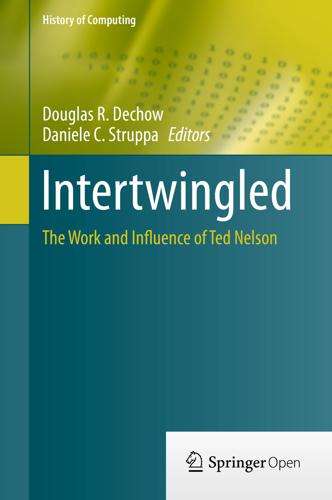
Intertwingled: The Work and Influence of Ted Nelson (History of Computing)
by
Douglas R. Dechow
Published 2 Jul 2015
Again, this was at a time when the whole idea of text on a screen was seen as a waste of processing power, let alone bizarre “nonsequential” text. In 1965, unless you were working on Doug Engelbart’s team or could afford a system with video-type display (Nelson reasons it “would cost less than a secretary” in his paper, at $37,000 in 1965 money, which would be a well-paid secretary), computers were expensive things with more important jobs to do. For most organisations they still didn’t have screens. I should also stress that, in 1965, text was not data—it was something academics and journalists manipulated with typewriters. As Doug Engelbart told me in 1999, the whole concept of a human being sitting in an interactive feedback loop with a computer, manipulating symbols on a screen, was foreign to most people in the 1960s.It was wacky even in the seventies, when we had it working–real hypermedia, real groupware working.
…
Ted Nelson Frode Hegland1 (1)10 Elm Lodge, SW6 6NZ London, UK Frode Hegland Email: frode@hegland.com 12.1 Introduction I’d like to talk about Ted the man, limits, connections, some pretty broad history, all leading up to why I believe Ted is limitless. I was born in Norway. Land of vikings, socially connected politics. Ancestral home of Ted Nelson and Doug Engelbart. A land of fjords. For me the picture has changed to a view of the Thames. I now live in London, greatest city in the world, but I won’t go on and on about that. What I do: I’m a software developer in the school of Doug Engelbart and Ted Nelson. To me, interactivity is paramount – that’s what all my work is about. My main project and product is Liquid, which allows you to do useful things directly to selected text in any Mac OS X application.
…
Mindful Press, Sausalito 10. Nelson TH (2010) Possiplex: movies, intellect, creative control, my computer life and the fight for civilization. n.p., available at Lulu: http://www.lulu.com/shop/ted-nelson/possiplex/paperback/product-14925222.html 11. Nelson TH (2013) Eulogy for Douglas Engelbart. Speech at Technology legend: honoring Douglas Engelbart, computer history museum, mountain view California, December 9th 2013. http://www.youtube.com/watch?v=FNCCkhADpiw 12. Smith LC (1991) Memex as an image of potentiality revisited. In: Nyce J, Kahn P (eds) From memex to hypertext: vannevar bush and the mind’s machine.
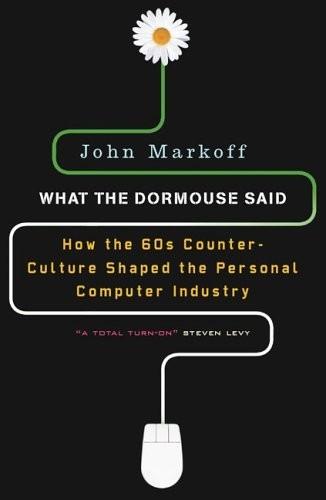
What the Dormouse Said: How the Sixties Counterculture Shaped the Personal Computer Industry
by
John Markoff
Published 1 Jan 2005
The previous year, he had introduced the idea of an all-magnetic computer at an industry technical conference and now was planning to deliver a report on the group’s work at the Philadelphia meeting. His traveling companion, Douglas Engelbart, was a member of Crane’s small team of engineers that was exploring magnetic storage and magnetic computing systems. The two men frequently socialized and were both devotees of Greek folk dancing, which they performed in their homes on the Midpeninsula. Yet Engelbart presented special managerial headaches for Crane. A dreamy engineer with a mind of his own, Doug Engelbart was not an easy person to control. He had joined the group in 1957, and though he recognized that he had to earn his keep by working on SRI projects, he had arrived with his own agenda: a scheme for building a machine to “augment” human intelligence.
…
Engelbart Collection, Stanford Special Libraries, Stanford University. 3.Memo, March 14, 1961, Douglas C. Engelbart Collection, Stanford Special Library, Stanford University. 4.Doug Engelbart, “The Augmented Knowledge Workshop,” in Proceedings of the ACM Conference on the History of Personal Workstations, ed. Adele Goldberg (New York: ACM, 1988), p. 190. 5.D. C. Engelbart, “Augmenting Human Intellect: A Conceptual Framework,” prepared for Director of Information Sciences, Air Force Office of Scientific Research, October 1962, p. 5. 6.Ibid., p. 6. 7.Douglas Engelbart, oral history, interview by John Eklund, Division of Computers, Information, and Society, National Museum of American History, Smithsonian Institute, May 4, 1994. http://americanhistory.si.edu/csr/comphist/englebar.htm. 8.Oral history, interview by Lowood and Adams. 9.M.
…
Computers until then were hulking behemoths deemed useful for large organizational tasks, ranging from check processing to calculating missile trajectories. Doug Engelbart realized that computing could be more than data processing. Previously, teams of humans had served a single computer; now, the computer would become a personal assistant. The notion flowed directly from Vannevar Bush’s Memex, and Xerox researcher Alan Kay’s Dynabook—a fantasy concept of a powerful, wirelessly networked portable computer—was to embody the idea a decade later. Indeed, it has become one of the enduring touchstones of Silicon Valley, and it was born in Doug Engelbart’s search for ways to elevate the power of the human mind.

The Innovators: How a Group of Inventors, Hackers, Geniuses and Geeks Created the Digital Revolution
by
Walter Isaacson
Published 6 Oct 2014
The best account of Engelbart is Thierry Bardini, Bootstrapping: Douglas Engelbart, Co-evolution, and the Origins of Personal Computing (Stanford, 2000). This section also draws on Douglas Engelbart oral history (four sessions), conducted by Judy Adams and Henry Lowood, Stanford, http://www-sul.stanford.edu/depts/hasrg/histsci/ssvoral/engelbart/start1.html; Douglas Engelbart oral history, conducted by Jon Eklund, the Smithsonian Institution, May 4, 1994; Christina Engelbart, “A Lifetime Pursuit,” a biographical sketch written in 1986 by his daughter, http://www.dougengelbart.org/history/engelbart.html#10a; “Tribute to Doug Engelbart,” a series of reminiscences by colleagues and friends, http://tribute2doug.wordpress.com/; Douglas Engelbart interviews, in Valerie Landau and Eileen Clegg, The Engelbart Hypothesis: Dialogs with Douglas Engelbart (Next Press, 2009) and http://engelbartbookdialogues.wordpress.com/; The Doug Engelbart Archives (includes many videos and interviews), http://dougengelbart.org/library/engelbart-archives.html; Susan Barnes, “Douglas Carl Engelbart: Developing the Underlying Concepts for Contemporary Computing,” IEEE Annals of the History of Computing, July 1997; Markoff, What the Dormouse Said, 417; Turner, From Counterculture to Cyberculture, 110; Bardini, Bootstrapping, 138. 23.
…
This section also draws on Douglas Engelbart oral history (four sessions), conducted by Judy Adams and Henry Lowood, Stanford, http://www-sul.stanford.edu/depts/hasrg/histsci/ssvoral/engelbart/start1.html; Douglas Engelbart oral history, conducted by Jon Eklund, the Smithsonian Institution, May 4, 1994; Christina Engelbart, “A Lifetime Pursuit,” a biographical sketch written in 1986 by his daughter, http://www.dougengelbart.org/history/engelbart.html#10a; “Tribute to Doug Engelbart,” a series of reminiscences by colleagues and friends, http://tribute2doug.wordpress.com/; Douglas Engelbart interviews, in Valerie Landau and Eileen Clegg, The Engelbart Hypothesis: Dialogs with Douglas Engelbart (Next Press, 2009) and http://engelbartbookdialogues.wordpress.com/; The Doug Engelbart Archives (includes many videos and interviews), http://dougengelbart.org/library/engelbart-archives.html; Susan Barnes, “Douglas Carl Engelbart: Developing the Underlying Concepts for Contemporary Computing,” IEEE Annals of the History of Computing, July 1997; Markoff, What the Dormouse Said, 417; Turner, From Counterculture to Cyberculture, 110; Bardini, Bootstrapping, 138. 23.
…
See also Steven Levy, Insanely Great (Viking, 1994), 36. 30. Douglas Engelbart oral history, Stanford, interview 3, Mar. 4, 1987. 31. Douglas Engelbart, “Augmenting Human Intellect,” prepared for the director of Information Sciences, Air Force Office of Scientific Research, Oct. 1962. 32. Douglas Engelbart to Vannevar Bush, May 24, 1962, MIT/Brown Vannevar Bush Symposium, archives, http://www.dougengelbart.org/events/vannevar-bush-symposium.html. 33. Douglas Engelbart oral history, Stanford, interview 2, Jan. 14, 1987. 34. Author’s interview with Bob Taylor. 35. Douglas Engelbart oral history, Stanford, interview 3, Mar. 4, 1987. 36.
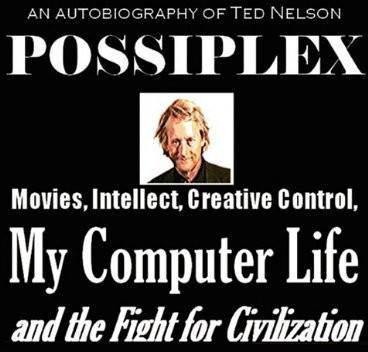
Possiplex
by
Ted Nelson
Published 2 Jan 2010
I have had a number of spiritual brothers, who form a part of this story for the inspirational effects they have had on me. TIM AND DOUG AND STAN Timothy Leary and Douglas Engelbart and Stan Dale have all spontaneously called me ‘brother’. I accept this with honor and pride. (That term of praise triangulates the coordinates of my soul, and almost makes the rest worthwhile.) DOUG ENGELBART ESPECIALLY Doug and I, Marlene and Karen have gotten like family. We have hung out in California, Japan and England. ST. DOUG ! The author and Douglas Engelbart on the patio of Doug's home, August 2010. Unretouched frame selected from video by Marlene Mallicoat; halo is optically authentic.
…
Surely the population collapse will come before that time. But can the outcome be better? Can better document systems help us, as Doug Engelbart hoped long ago, to solve the complex and urgent problems of today? Can we ever— • reduce the dangers of nuclear weapons? • create peace and justice in the middle east? • reduce pollution? • fight poverty and injustice? • slow population growth? • turn back global warming? • save the last rain forests? And on and on. I will not try to enumerate today’s global problems. These are the "complex urgent problems" Doug Engelbart warned us about long ago, which he unswervingly sought tools and methods to solve.
…
Many of my file cards belonged in several places at once— several different sequences or projects. Each card—call it now an entry or an item--*should be stored only once. Then each project or sequence would be a list of those items. Each entry would seem to be in each of its different projects, but it would only exist in one place, and the lists would point to it. * Or in Doug Engelbart’s terminology, a statement. Of course, you would also want to see (from each entry) its different contexts—its different transclusions-- and compare them side by side. This perfectly reasonable premise—being able to see all the contexts of re-use-- was to drive my work to the edge of madness, as recounted later.
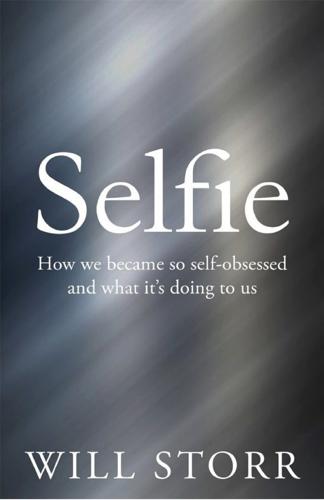
Selfie: How We Became So Self-Obsessed and What It's Doing to Us
by
Will Storr
Published 14 Jun 2017
In fact, as we’re talking about Rand, this seems staggeringly unlikely. Book Six: The Digital Self A man, Doug Engelbart, appearing in a headset: My account of the story of Doug Engelbart, ARC, EST and Stewart Brand was mostly sourced from: What the Dormouse Said, John Markoff (Penguin, 2005); From Counterculture to Cyberculture, Fred Turner (University of Chicago Press, 2006); The Network Revolution, Jacques Vallee (Penguin, 1982); Bootstrapping, Thierry Bardini (Stanford University Press, 2000); ‘Chronicle of the Death of a Laboratory: Douglas Engelbart and the Failure of the Knowledge Workshop’, Thierry Bardini and Michael Friedewald, History of Technology (2003), 23, pp. 191–212; ‘Douglas Engelbart’s lasting legacy’, Tia O’Brien, Mercury News, 3 March 2013.
…
.: Bootstrapping, Thierry Bardini (Stanford University Press, 2000), pp. 198–200. Engelbart was treating his people like ‘laboratory animals’: ‘Chronicle of the Death of a Laboratory: Douglas Engelbart and the Failure of the Knowledge Workshop’, Thierry Bardini and Michael Friedewald, History of Technology (2003), 23, pp. 191–212, at p. 206. who raced back to his company, Apple Computer: Steve Jobs, Walter Isaacson (Abacus, 2015), pp. 96–7. Engelbart recalled meeting Jobs in the 1980s: ‘Douglas Engelbart’s lasting legacy’, Tia O’Brien, Mercury News, 3 March 2013. Fred Turner, would archly note that: ‘Stewart Brand’s Whole Earth Catalog, the book that changed the world’, Carole Cadwalladr, Guardian, 5 May 2013.
…
But another is the internet and social media, which have become increasingly dominant, in our time, especially in the lives of the young. It’s in this milieu that the self-esteem generation has become the selfie generation. BOOK SIX The Digital Self Black screen. Polite applause. A man, Doug Engelbart, appearing in a headset. He wore a black tie, fastened high and tight; his eyes in shadow beneath heavy brows that gave him an air of distance and melancholy. Many of the technology experts in the audience considered Engelbart a ‘crackpot’. They had no idea he had, upon his desk that day, pieces of technology that were as if from a time machine.

Fire in the Valley: The Birth and Death of the Personal Computer
by
Michael Swaine
and
Paul Freiberger
Published 19 Oct 2014
And Engelbart controlled it all with an extraordinary device called a mouse that had an apparently telepathic link with a dot (they called it a “bug”) that moved around the screen, specifying where instructions would take effect. By using the “mouse,” Engelbart could click on a word and jump to another location in the document or to another document. * * * Figure 71. The first mouse Douglas Engelbart invented the mouse in 1964 as an input device. This first one was carved from a block of wood. (Courtesy of Doug Engelbart) The demonstration got even more interesting when Engelbart introduced one of his team members via a video/audio link. This man also sat in front of a device like Engelbart’s, and wore a microphone and headphones. Both he and Engelbart were in front of television cameras so they could speak to each other.
…
It included collapsible and expandable outline lists, text with embedded links to other documents as in web browsers today, a mouse, a one-handed chording keyboard that left one hand free for the mouse, and live video and audio conferencing with a user in another city. And this was in 1968. * * * Figure 72. Douglas Engelbart Tech visionary Engelbart holds his original wood-block mouse alongside a more modern descendant. (Courtesy of Doug Engelbart) Engelbart presented more innovation that day than most acknowledged greats of the field achieved in a lifetime, and he was still a young man. When he finished, the audience gave him a standing ovation. It was later called “the mother of all demos,” and the National Museum of American History (at the Smithsonian) has preserved elements of it.
…
In December 1968, the Fall Joint Computer Conference (FJCC) took place in San Francisco, and it included a presentation by Douglas Engelbart and his colleagues from what was then called the Stanford Research Institute, later SRI, in Menlo Park, a few miles up the peninsula from Cupertino. Engelbart, an angular man who spoke quietly and efficiently, took the stage decked out in microphone and headphones, and seated himself in front of a bizarre device that featured a keyboard and other odd implements. Behind him was a screen, on which much of the demonstration would play out. * * * Figure 70. The mother of all demos The input devices used by Douglas Engelbart at the 1968 Fall Joint Computer Conference when he put on “the mother of all demos” (Courtesy of Doug Engelbart) The demo was like opening a window into the future.

Whole Earth: The Many Lives of Stewart Brand
by
John Markoff
Published 22 Mar 2022
Brand came to believe that tools were inherently democratizing and would serve as agents of social change. Further, his passion for tools would translate into a general stance as a technophile with a deep faith that human progress was dependent on technological advances. It was a perspective that would be reinforced the following year when he fell into the orbit of Doug Engelbart, the iconoclastic computer scientist who saw the computer as the most universal of tools. In July, Brand and Jennings headed to Big Sur for an Esalen seminar. Afterward, they hiked back into the wilderness and spent three weeks exploring what it was like to live off the land. Despite his affection for San Francisco, Brand remained captivated by the romance of primitive living.
…
The future of computing and what would become the internet were being designed at two labs located on either side of the Stanford campus: the Stanford Artificial Intelligence Laboratory (SAIL) and the Augmentation Research Center at the Stanford Research Institute. Many of the young researchers in those labs were close to the counterculture, and through Dick Raymond, Brand became friends with a number of them. One day he wandered into the office of Dave Evans, a young Australian computer researcher who was a key member of Doug Engelbart’s Augmentation Research Center, and discovered a Janis Joplin poster on his wall. Brand decided that he felt quite at home in the emerging computing world. He announced to Raymond that he was “sort of” looking for a job in business technology and hoped that Raymond would have either a position or a pointer to something interesting.
…
Vic Lovell, Shugart’s former boyfriend and a psychology graduate student who alerted Kesey to the LSD experiments at the Menlo Park Veterans Administration Hospital, and Richard Alpert, as well as the writers and Kesey pals Robert Stone and Ed McClanahan, had previously lived just a couple of blocks over on Homer Lane, as had several Merry Pranksters. In a cottage at the other end of the tiny neighborhood, Bill English, Doug Engelbart’s chief engineer, was renting a home from Raymond. English would be closely involved in several conferences on sustainability and environmental design that grew out of the Catalog. His wife, Roberta, was working as a secretary for Engelbart (and as a result was probably the first secretary to ever use an interactive word processor with video display).

Machines of Loving Grace: The Quest for Common Ground Between Humans and Robots
by
John Markoff
Published 24 Aug 2015
That meant robotic arms and legs for wounded soldiers, and an “admiral’s advisor,” a military version of what Doug Engelbart had set out to do in the 1960s with his vision of intelligence augmentation, or IA. The project was referred to as PAL, for Perceptive Assistant that Learns, and much of the research would be done at SRI International, which dubbed the project CALO, or Cognitive Assistant that Learns and Organizes. It was ironic that Tether returned to the research agenda originally promoted during the mid-1960s by two visionary DARPA program managers, Robert Taylor and J. C. R. Licklider. It was also bittersweet, although few mentioned it, that despite Doug Engelbart’s tremendous early success in the early 1970s, his project had faltered and fallen out of favor at SRI.
…
This distinction is clearest in the contrasting philosophies of Andy Rubin and Tom Gruber. Rubin was the original architect of Google’s robot empire and Gruber is a key designer of Apple’s Siri intelligent assistant. They are both among Silicon Valley’s best and brightest, and their work builds on that of their predecessors—Rubin mirrors John McCarthy and Gruber follows Doug Engelbart—to alternatively replace or augment humans. Today, both robotics and artificial intelligence software increasingly evoke memories of the early days of personal computing. Like the hobbyists who created the personal computer industry, AI designers and roboticists are hugely enthusiastic about the technological advances, new products, and companies clearly ahead of them.
…
Fortunately Stanford Research Institute was a big place and Duvall was soon attracted by a more intriguing project. Just down the hall from the Shakey laboratory he would frequently encounter another research group that was building a computer to run a program called NLS, the oN-Line System. While Shakey was managed hierarchically, the group run by computer scientist Doug Engelbart was anything but. Engelbart’s researchers, an eclectic collection of buttoned-down white-shirted engineers and long-haired computer hackers, were taking computing in a direction so different it was not even in the same coordinate system. The Shakey project was struggling to mimic the human mind and body.
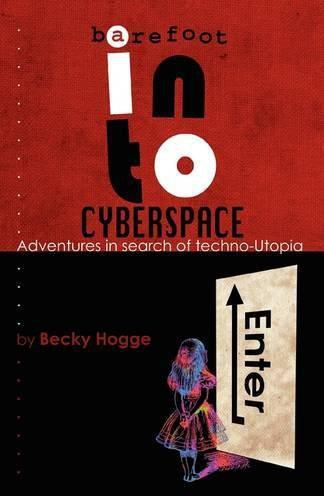
Barefoot Into Cyberspace: Adventures in Search of Techno-Utopia
by
Becky Hogge
,
Damien Morris
and
Christopher Scally
Published 26 Jul 2011
It was Brand’s encounters with Engelbart that switched him on to the cognitive potential of an alternate technology to psychedelics. “Basically,” Brand continues, “I was just being in the Bay area paying attention to interesting people. So for the same reason I was paying attention to Ken Kesey, I was paying attention to Doug Engelbart.” In December 1968, Engelbart demonstrated a number of his experimental ideas to a conference of computer scientists in the San Francisco Convention Center. The event was later dubbed “The Mother of all Demos”, thanks to the fact that it was the world’s first sighting of a number of computing technologies, including the mouse, email and hypertext.
…
According to John Markoff, author of What the Dormouse Said: How the Sixties Counter-culture Shaped the Personal Computer Industry, at around about the time America’s atom bomb destroyed the city of Hiroshima – killing 80,000 of its residents, maiming tens of thousands more, and ending Japan’s involvement in World War II – Doug Engelbart was sailing out of San Francisco harbour on his way to do his military service in the Philippines. He and his co-passengers even saw the VJ Day celebrations beginning on the shore as they sailed away. It was in the Philippines that Engelbart marked time in a grass hut that had been converted into a library.
…
Bush describes his vision: Photocells capable of seeing things in a physical sense, advanced photography which can record what is seen or even what is not, thermionic tubes capable of controlling potent forces… cathode ray tubes… In fact, the memex reminds me of the disembodied Heath Robinson creations I saw littering the floor in the basement at the Chaos Communication Congress. But outside of Chaos, your average 21st-century computer user will be more familiar with the computer components that Doug Engelbart troubled himself over than with anything Vannevar Bush wrote about. Ask a child to draw a computer and he will draw a keyboard, screen, mouse and – possibly – a box sitting next to it. Yet the box is the computer – the rest of it is just input and output devices. Engelbart was not an acid head, but according to John Markoff he, like Brand, had taken part in the IFAS experiments, with mixed results.
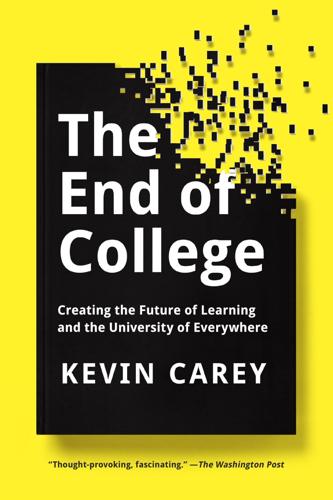
The End of College: Creating the Future of Learning and the University of Everywhere
by
Kevin Carey
Published 3 Mar 2015
the average sticker price of attending a public four-year university increased by roughly 80 percent: College Board, Trends in College Pricing 2013. 6: THUNDER LIZARDS he came across an article: John Markoff, “Computer Visionary Who Invented the Mouse,” New York Times, July 3, 2013. he finished a PhD in electrical engineering: Doug Engelbart Institute, “Dr. Douglas C. Engelbart Curriculum Vitae,” http://dougengelbart.org/about/cv.html. In handwritten notes summarizing his speech: Doug Engelbart, “Augmented Man, and a Search for Perspective,” Stanford Research Institute, December 16, 1960. The team used the tools they developed as they built them: Douglas Engelbart and William English, “A Research Center for Augmenting Human Intellect,” AFIPS Conference Proceedings of the 1968 Fall Joint Computer Conference 33, San Francisco, December 9, 1968, pp. 395–410.
…
EPGY is sophisticated but inflexible, said Koller, and after a while she and her daughter started watching Khan Academy videos instead. They were more satisfying, because the experience was more “Web 2.0,” which is a way of describing online environments in which large numbers of people communicate and collaborate, learning and making together. Suppes’s original Teletype math program came before Doug Engelbart and his team showed the world what the future of networked collaboration would look like. People like forming communities with other people. Koller was right about the virtues of Web 2.0. But this is also what you have to say when you’re a platform and don’t have the time, money, expertise, or business model to build, as Coursera claims to, “the world’s best courses, online, for free.”
…
It is hardwired into an enormous generator of business development and technological innovation, a machine fueled by money, ambition, idealism, and the iron laws of physics. That machine was created, beginning in the crucial period following World War II, to search for old, expensive institutions and burn them to the ground. And in the last several years it has turned its gaze toward the cathedrals of learning. — DOUGLAS ENGELBART grew up during the Great Depression on a farm outside Portland and studied at the nearby land-grant university, Oregon State. He was drafted into the Navy and found himself working as a radar technician on a small island in the Philippines, where he came across an article that had recently been published in the Atlantic: “As We May Think,” by Vannevar Bush.
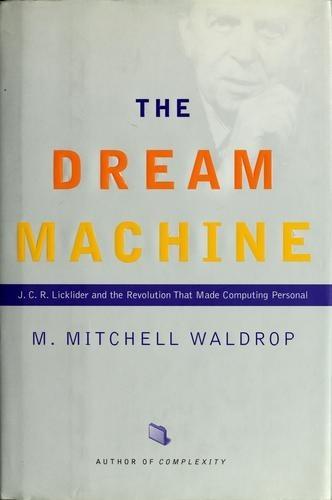
The Dream Machine: J.C.R. Licklider and the Revolution That Made Computing Personal
by
M. Mitchell Waldrop
Published 14 Apr 2001
But then once you got to know him a bit, you saw that much of this man's quietness came from his habit of listening-deeply, profoundly listening to every- thing that was happening around him, and trying to work out its most funda- mental meaning. And then when he did talk, his soft, diffident baritone somehow managed to be hypnotic in its intensity. His name was Douglas Engelbart. It was in December 1950, says Doug Engelbart, thinking back to the morning when it all changed for him. He was twenty-five years old, and by every objec- tive measure, life was good. A decade earlier he'd been a semipoor teenager in the semirural outskirts of Portland, Oregon, still getting up every morning to milk the family cow.
…
By December 1968, the fu- ture as envisioned by the ARPA community was beginning to take shape, how- ever sketchily. And now here was Doug Engelbart, expanding by an order of magnitude their sense of what that future might really mean. The name Wood- stock wouldn't acquire its modern connotation for another nine months, not until the weekend of August 15-17, 1969, and a certain rock concert in the hills of upstate New York. But if ever there was an event that qualified as ARPA's Woodstock, this was it. THE IMP GUYS In January 1969, barely a month after Doug Engelbart's extravaganza in San Francisco, Larry Roberts formally announced that Engelbart's group at SRI would serve as the nascent ARPA network's Network Information Center.
…
But most important, they shared a passion for human-computer symbiosis. Robert W. Taylor was easily the most enthusiastic disciple J. C. R. Licklider ever had in Washington, if not in the entire country. It THE INTERGALACTIC NETWORK 261 was Taylor who pulled out all the stops to get NASA funding for Doug Engelbart. It was Taylor who put NASA money into a number of specific efforts within Proj- ect MAC-and even funded a study of interactive, computer-assisted air-traffic control at BBN. And it was Taylor who was brought over to ARPA in early 1965- on Lick's enthusiastic recommendation-to serve as a deputy to Ivan Sutherland.

From Counterculture to Cyberculture: Stewart Brand, the Whole Earth Network, and the Rise of Digital Utopianism
by
Fred Turner
Published 31 Aug 2006
They have been extraordinarily open and [ x ] Acknowledgments forthcoming, devoting hours and sometimes days to helping me understand their histories. For all of their help, I’d like to thank Bob Albrecht, Dennis Allison, John Perry Barlow, Reva Basch, Keith Britton, Lois Britton, John Brockman, Michael Callahan, John Coate, Doug Engelbart, Bill English, Lee Felsenstein, Cliff Figallo, David Frohman, Asha Greer (formerly Barbara Durkee), Katie Hafner, Paul Hawken, Alan Kay, Kevin Kelly, Art Kleiner, Butler Lampson, Liza Loop, John Markoff, Jane Metcalfe, David Millen, Nancy Murphy, Richard Raymond, Danica Remy, Howard Rheingold, Louis Rossetto, Peter Schwartz, Mark Stahlman, Gerd Stern, Shirley Streshinsky, Larry Tesler, Paul Tough, Jim Warren, and Gail Williams.
…
The first issue of the Supplement, for instance, included letters from Pranksters Ken Kesey and Ron Bevirt; Peter Rabbit of Drop City and, more recently, the Libre Commune; and Steve Durkee from the Lama Foundation, and an exchange between Steve Baer, who had designed the dome housing at Drop City, and Dave Evans, a staffer at Doug Engelbart’s Augmented Human Intellect project at the Stanford Research Institute. It also featured a detailed description of how to build a solar water heater, four pages of free events and services in New York City, and announcements for several experiments in living and building, including an advertisement for Paolo Soleri’s desert utopia, Arcosanti, and a proposal for “A Libertarian Nomadic Association in Southern California.”
…
As Engelbart later recalled, he was “very empathetic to the counterculture’s notions of community and how that could help with creativity, rationality and how a group works together.”12 Brand had met various members of the ARC group through Dick Raymond at the Portola Institute and through parties at the house of Bill English, ARC’s chief engineer and builder of the first computer mouse.13 As members of the ARC group became more intrigued by the burgeoning commune movement, Brand helped bring the two communities together. Steve Durkee, of USCO and the Lama Foundation, began to visit the ARC offices. Doug Engelbart and Bill English later traveled to New Mexico and the Libre commune, where they met with Steve Baer, the Whole Earth Catalog’s foremost authority on geodesic domes. In the fall of 1969, Dave Evans, [ 110 ] Chapter 4 a member of the ARC group, staged a three-day event called Peradam in the woods near Santa Barbara, in which he brought together technologists and members of the New Communalist movement.

Move Fast and Break Things: How Facebook, Google, and Amazon Cornered Culture and Undermined Democracy
by
Jonathan Taplin
Published 17 Apr 2017
This is where you can find the inexorably cathartic and impossibly slow “Drown in My Own Tears.” Chapter Three: Tech’s Counterculture Roots Although I never got to meet Doug Engelbart, I was fortunate enough to have spent time with some of the founders of the Internet, including Vint Cerf, Tim Berners-Lee, and most especially John Seely Brown, who has been a mentor to me for the past seven years. Thierry Bardini, Bootstrapping: Douglas Engelbart, Coevolution, and the Origins of Personal Computing (Palo Alto: Stanford University Press, 2000). Fred Turner, From Counterculture to Cyberculture (Chicago: University of Chicago Press, 2008), and John Markoff, What the Dormouse Said (New York: Viking, 2005), are both wonderful resources around the story of the early Internet.
…
How do we really take advantage of the Internet’s original purpose to decentralize its control and deepen our knowledge base? Perhaps the answer lies in understanding the countercultural roots of the Internet. CHAPTER THREE Tech’s Counterculture Roots He was dealing lightning with both hands. —Computer scientist Alan Kay 1. It was raining like hell outside, and Doug Engelbart was pacing nervously on the stage. A tall, fit forty-three-year-old wearing a crisp white shirt and blue tie, with streaks of gray showing in his neatly parted hair, he looked like he could work for NASA or the Defense Department. And he did, in the sense that for the past several years the Stanford Research Institute (SRI), in Menlo Park, California, had funded his quixotic quest to invent the future.
…
People were thunderstruck by this radical upending of what a computer could be. No longer a giant calculation machine, it was a personal tool of communication and information retrieval. 2. It is not an exaggeration to say that the work of Steve Jobs, Bill Gates, Larry Page, and Mark Zuckerberg stands on the shoulders of Doug Engelbart. Yet Engelbart’s vision of the computing future was different from today’s reality. In the run-up to the demonstration, Bill English had enlisted the help of Whole Earth Catalog publisher Stewart Brand, who had produced the Acid Tests with Ken Kesey two years earlier. Engelbart felt that Brand might help make his show into a multimedia event.
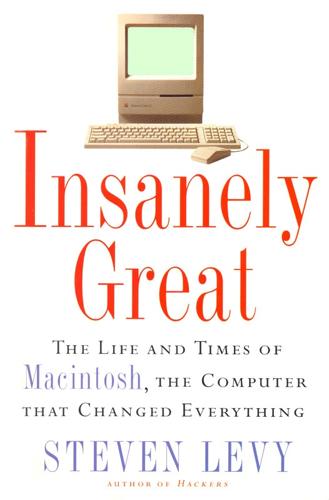
Insanely Great: The Life and Times of Macintosh, the Computer That Changed Everything
by
Steven Levy
Published 2 Feb 1994
Engelbart quit his job, moved to Berkeley with his new bride, and earned a Ph.D. in the budding field of computer science. He was hired by a think tank called the Stanford Research Institute (SRI), and he set up a group that he called the Augmentation Research Center. He cajoled a small grant from the government, and set out to change the way the world worked. And did. I once went to visit Doug Engelbart. His employer in 1983, the inheritor of what was left of the Augmentation Research Center, was a phone networking company called Tymshare. Amazingly, the building that housed Engelbart was in Cupertino, a quick turn off Bandley Drive. Unbeknownst to either of us as we spoke, less than two blocks away, Apple Computer's Mac Team was working feverishly to realize some of Engelbart's dreams (though they were hardly aware of the man himself).
…
Only by "augmenting man's intellect" could we remedy this situation-resulting in better comprehension of problems, quicker solutions to those problems, and the conquest of previously insoluble problems. And here was the news: The tools to perform this task were at hand. Here is how we will work in the future. And then Doug Engelbart predicted systems in which individuals would have personal computer workstations, networked to each other, and would even compose documents in which "trial drafts can be rapidly composed from rearranged excerpts of old drafts ... you can integrate your new ideas more easily and thus harness your creativity more continuously."
…
Engelbart, with a no-hands mike, talked them through, a calming voice from Mission Control as the truly final frontier whizzed before their eyes. It was the mother of all demos. Engelhart's support staff was as elaborate as one would find at a modern Grateful Dead concert. The viewers saw a projection of Doug Engelbart's face, with the text of the screen superimposed on it. At one point, control of the system was passed off, like some digital football, to the Augmentation team at SRI, forty miles down the peninsula. Amazingly, nothing went wrong. Not only was the future explained, it was there, as Engelbart piloted through cyberspace at hyperspeed.

Dreaming in Code: Two Dozen Programmers, Three Years, 4,732 Bugs, and One Quest for Transcendent Software
by
Scott Rosenberg
Published 2 Jan 2006
In the early days of programming, teams shared their knowledge on paper, in loose-leaf binders known as project workbooks, around which evolved complex processes of coordinating updates. (Brooks’s Mythical Man-Month devotes many pages to these rituals.) But as soon as programmers could move off paper, they did. The original digital groupware was Doug Engelbart’s NLS, the 1960s-era template for so much of what would unfold in the personal computing revolution to follow. Each new iteration of groupware has represented another stab at Engelbart’s notion of bootstrapping—using the tools of computing to improve the effectiveness of developing computing tools.
…
The term dogfooding may be popularly associated with Microsoft, but the practice is far older. At Xerox’s legendary Palo Alto Research Center, where modern personal computing was invented in the 1970s, “We use what we build” was the motto of research team leader Bob Taylor. And that formulation was simply a variation on Doug Engelbart’s bootstrapping. The goal of bootstrapping was to rev up a feedback loop so that today you would use the tool you invented yesterday to build a better one for tomorrow; dogfooding, by contrast, had the more modest and pragmatic aim of speeding up bug-finding and bug-fixing by shoving developers’ noses into their products’ flaws.
…
Mathematically speaking, “recursion” describes a function that calls itself; in computer science, recursion refers to defining a function in terms of itself. The logic of recursion allows simple, compact statements to generate complex and elaborate output. It lies at the heart of many of computing’s most celebrated and inspiring systems and ideas. Doug Engelbart’s notion of bootstrapping was a recursive technique for accelerating human progress. Lisp—the language invented in the late 1950s by John McCarthy that, decades later, still inspired many of OSAF’s programmers—is one great recursion machine. Alan Kay likes to point to McCarthy’s “half-page of code at the bottom of page 13 of the Lisp 1.5 manual” and praise it as the “Maxwell’s equations of computing”—concentrated, elegant statements that distilled the field’s fundamental principles just as James Clerk Maxwell’s four equations had laid out the essential workings of electricity and magnetism at the dawn of the machine age.

Troublemakers: Silicon Valley's Coming of Age
by
Leslie Berlin
Published 7 Nov 2017
Many of those students would go on to do pioneering and critical work in computer science. Taylor continued to travel to visit principal investigators, all of whom had ARPA-funded projects they were working on in addition to the network. A demonstration by one of those researchers, a craggy-faced forty-two-year-old engineer named Doug Engelbart at the Stanford Research Institute, impressed Taylor. Taylor had quietly been supporting Engelbart’s rather out-there research since 1961, when Taylor, then at NASA, had funded Engelbart to build a new interactive computing system that included, among its many innovative features, the world’s first computer mouse.46 (Taylor later said, “Remember when NASA was advertising Tang [the bright-orange-colored drink consumed by astronauts] as its big contribution to the civilized world?
…
A researcher in California would be able to point to a spot on his interactive terminal, and thousands of miles away, at MIT for example, someone else on a networked computer would be able to see that cursor move. Taylor told Licklider about the demonstration, and the two men included a detailed description of it in their 1968 “The Computer as a Communication Device” article. They told their readers, “If our extrapolation from Doug Engelbart’s meeting proves correct, you will spend much more time in computer-facilitated teleconferences and much less en route to meetings.” More significantly, Taylor insisted that Engelbart find a way to show more people what this system could do. “I was working with the rest of the computer world, as well as with Engelbart,” he recalls.
…
NIELS REIMERS Some three hundred people, most of them Stanford students, had shown up by 7:30 on that May morning in 1969, determined to shut down a satellite office of the Stanford Research Institute (SRI) a day after the People’s Park protests had rocked Berkeley. SRI’s much larger headquarters facility, where Doug Engelbart had done the work unveiled six months earlier in the Mother of All Demos, was four miles north, in Menlo Park. This satellite office, located only a few blocks from the southern edge of the Stanford campus, housed a computer that protesters claimed was analyzing activities of Communist insurgents in Southeast Asia.
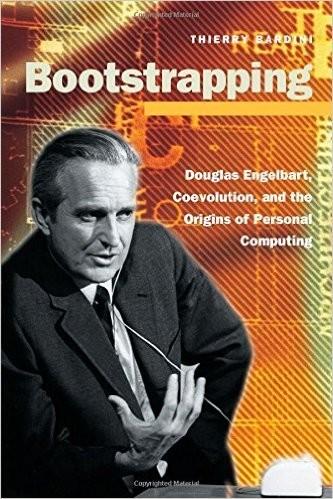
Bootstrapping: Douglas Engelbart, Coevolution, and the Origins of Personal Computing (Writing Science)
by
Thierry Bardini
Published 1 Dec 2000
To understand the answers to these questions, and with them, the origins of personal computing, it is necessary to begin by understanding the contribu- tions of Douglas Engelbart and the concerns that motivated them. Famous and revered among his peers, Engelbart is one of the most misunderstood and per- haps least-known computer pioneers. This book proposes to remedy this, and not only for the sake of a case study or to claim a spot for Douglas Engelbart in the pantheon of the computer revolution, but also because such an enter- prise teaches us many lessons in the development, diffusion, and effect of the defining technology of the twentieth century: the computer.
…
The linkIng and relinking of objects by the Brain IS actually a language, but not a language like ours (since It IS addressIng Itself and not someone or some- thIng outsIde Itself). - PHI LIP K. ole K , Val,s Very few people outside the computer industry know Douglas Engelbart, the leading figure of the Augmentation of Human Intellect project, and among those people, many still credit him only with technological innovations like the mouse, the outline processor, the electronic-mail system, or, sometimes, the windowed user interface. These indeed are major innovations, and today they have become pervasive in the environments in which people work and play. But Douglas Engelbart never really gets credit for the larger contribution that he worked to create: an integrative and comprehensive framework that ties to- gether the technological and social aspects of personal computing technology.
…
I The story of the personal interface thus is twofold. It is the story of a technological innovation. At the same time, it is the story of how Douglas Engelbart and the other designers of that technology conceived of the people who would use it. That part of the story involves how they understood humans to live and work, to think and act. It also involves more than that: how they believed humans could do better at living and working, thinking and acting. Both aspects of the story meet in what Douglas Engelbart always called his "crusade. " In the I 9 50'S, computing technology was still in its early stages, character- ized by massive machines devoted to number crunching.

The Secret War Between Downloading and Uploading: Tales of the Computer as Culture Machine
by
Peter Lunenfeld
Published 31 Mar 2011
The possibilities seemed endless. I call the next generation the Aquarians, and they were like painters eyeing a blank canvas or sculptors circling a block of marble. The Aquarians: Douglas Engelbart and Alan Kay In 20 or 30 years, you’ll be able to hold in your hand as much computing knowledge as exists now in the whole city, or even the whole world. —Douglas Engelbart It’s not the technology that lives. It’s the dream that lives. —Alan Kay Doug Engelbart worked in the world that the Plutocrats ruled, but made the world in which we live. He drew inspiration from the visions of the Patriarchs, and they funded his campaign against the culture of the Plutocrats.
…
And selling to the masses is one way to be remembered, at least in the United States. Selling to the masses is what Hustlers were born to do. The Hustlers: Steve Jobs and Bill Gates Who can afford to do professional work for nothing? —Bill Gates, 1976 Real artists ship. —Steve Jobs, 1983 162 HOW THE COMPUTER BECAME OUR CULTURE MACHINE If J.C.R. Licklider and Douglas Engelbart are obscure talismans even among the best-informed computer users, Steve Jobs and Bill Gates are iconic, triumphal nerds.20 Jobs at his height was perhaps the most intriguing businessperson in the world, and one of the few people to have built multibillion-dollar companies in two different industries, with Apple computers and Pixar animated films.
…
Over the longer term, the rate of increase is a bit more uncertain, although there is no reason to believe it will not remain nearly constant for at least 10 years. That means by 1975, the number of components per integrated circuit for minimum cost will be 65,000. I believe that such a large circuit can be built on a single wafer.” 14 . See Thierry Bardini, Bootstrapping: Douglas Engelbart, Coevolution, and the Origins of Personal Computing (Palo Alto, CA: Stanford University Press, 2001). 15 . See John Markoff, What the Dormouse Said: How the 60s Counterculture Shaped the Personal Computer (New York: Viking, 2005). For a broader sense of the California spiritual landscape, see Erik Davis, Visionary State (San Francisco: Chronicle Books, 2006). 16 .

User Friendly: How the Hidden Rules of Design Are Changing the Way We Live, Work & Play
by
Cliff Kuang
and
Robert Fabricant
Published 7 Nov 2019
Atkinson nonetheless crowded his way to the fore, so close that Larry Tesler, one of Smalltalk’s leaders, could feel Atkinson’s breath as he peppered the team with questions about every detail on the screen. Smalltalk had emerged from an almost comically grand vision for what they were making. It was descended from the legendary Doug Engelbart’s LSD trips and the utopian philosophies that scented the Northern California air. Alan Kay, inspired by emerging findings in child psychology, wanted to create an entirely new form of pedagogy so that those kids might grow up to solve the problems of a new world. The computer would become a “safe and covert environment, where the child can assume almost any role without social or physical hurt”—a kind of digital sandbox that could touch any piece of information that the world had to offer, one that would let children build computer programs as easily as they might build sandcastles.20 The Smalltalk demo was just an hour long, and for Bill Atkinson it was a blur.
…
McKim, as one of the first professors Arnold had recruited, was then thrust into the role of leading a growing product-design curriculum. McKim went looking for new methods of unlocking creativity. He took mescaline, in the same experiments that came to include pioneers of modern computing such as Doug Engelbart. He found himself at Esalen—perhaps most famous today as the site of Donald Draper’s closing epiphany in Mad Men. Esalen had recently been founded by two Stanford graduates on a stunning coastal plot in Big Sur that one of them had inherited. (Before the graduates arrived, the property’s hot springs had been a gay party spot on weekends; the gun-toting night watchman was Hunter S.
…
Or is there something to be found in the lives of people at the edges, whose very difference might allow them to sense something that the rest of us cannot? OXO ice-cream scoop and peeler (1990) 7 Humanity What would later be called the Mother of All Demos—the most consequential tech demonstration of all time—happened on December 9, 1968, a chilly and gray San Francisco morning. Inside a darkened Brooks Hall auditorium, Doug Engelbart sat beneath a twenty-two-foot screen nervously waiting to begin a presentation that would predict nearly every major computing development of the next fifty years. “I hope you’ll go along with this rather unusual setting,” he began, speaking through a microphone headset. Under his breath he muttered, “I hope.”

Where Wizards Stay Up Late: The Origins of the Internet
by
Katie Hafner
and
Matthew Lyon
Published 1 Jan 1996
Dave Evans, who, with Ivan Sutherland, later started Evans and Sutherland, a pioneering graphics company, was at Utah putting together a system that would take images and manipulate them with a computer. Evans and his group were also interested in whether the network could be used for more than just textual exchanges. Stanford Research Institute (later it severed its ties to Stanford and became just SRI) had been chosen as one of the first sites because Doug Engelbart, a scientist of extraordinary vision, worked there. Several years earlier, when Bob Taylor was at NASA he had funded Engelbart’s invention of the first computer mouse (Engelbart received a patent for the device as an “X-Y position indicator for a display system”), and for years afterward Taylor pointed with pride to his support of Engelbart’s mouse.
…
Why can’t we configure headers to print only the pieces of the header we choose to read? Reid asked. “Go ahead and put in thirty-four different header fields,” he said. “All I ever really want to look at is ‘from’and ‘date.’” Others agreed. The ideal program would allow users to design their own headers. At least one elaborate mail system, Doug Engelbart’s NLS JOURNAL MAIL, offered an “invisible information” feature that allowed selective viewing of a great deal of header data. On May 12, 1977, Ken Pogran, John Vittal, Dave Crocker, and Austin Henderson launched a computer mail putsch. They announced “at last” the completion of a new mail standard, RFC 724, “A Proposed Official Standard for the Format of ARPA Network Messages.”
…
The report served as the basis for their book Transforming Computer Technology: Information Processing for the Pentagon, 1962–1986 (Johns Hopkins University Press, 1996). Paul Baran and Professor Manley Irwin supplied the information concerning AT&T’s lawsuits against parties thought to be depriving AT&T of revenues. Doug Engelbart’s patent for his mouse came on November 17, 1970. It is patent No. 3,541,541. Chapter Three The history of Bolt Beranek and Newman was based on personal interviews with Dick Bolt and Leo Beranek. The description of Lincoln Laboratory was based on interviews with Wes Clark, Frank Heart, Larry Roberts, and Len Kleinrock.
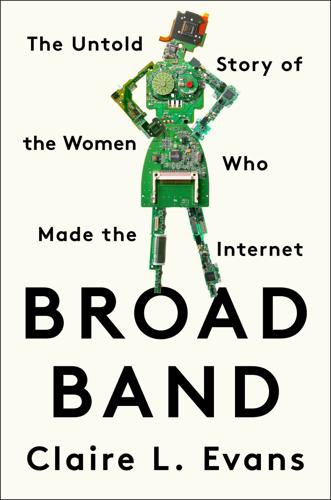
Broad Band: The Untold Story of the Women Who Made the Internet
by
Claire L. Evans
Published 6 Mar 2018
“This web of time,” Borges wrote, “the strands of which approach one another, bifurcate, intersect or ignore each other through the centuries—embraces every possibility.” He may have loved the World Wide Web. The Web as we know it isn’t modeled on Borges, Joyce, or the Talmud. The most famous hypertext pioneers are men—Doug Engelbart, Jake Feinler’s mentor at Stanford, incorporated hypertext into his oNLine System, and Ted Nelson, a Bay Area counterculture hero, coined the word and has championed utopian hypertext ideas for decades—but the Web appeared on the scene only after hypertext principles and conventions had been explored for nearly a decade by brilliant female researchers and computer scientists.
…
Realizing she was more interested in information itself than in chemistry, she took a job at Stanford helping scholars with technical research—gathering reprints and running around to different libraries before summarizing her findings on index cards, much as a search engine works today. At Stanford, Jake worked in a basement lab. It wasn’t long before an upstairs neighbor, Douglas Engelbart, began popping down to her office for organizational advice. Engelbart had invented a computer system called NLS (oNLine System) in the late 1960s, a predecessor to the modern personal computer in both form and philosophy, and the first system to incorporate a mouse and a keyboard into its design.
…
Whatever it was, it made technical research look boring. One day, when Engelbart came down to visit her office, Jake asked him for a job. He told her he didn’t have one, but he kept her in mind and, six months later, he came back. “I have a job now,” he announced. It had nothing to do with index cards; instead, Douglas Engelbart introduced Jake Feinler to the wild new world of networked computing. Her life would never be the same. In the fall of 1969, one of Engelbart’s machines had been on the receiving end of the first transmission between two host computers on the ARPANET. The connection crashed halfway through, truncating that very first Internet message from LOGIN to the somewhat more prophetic LO.
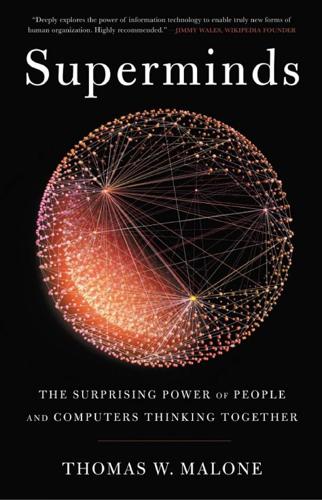
Superminds: The Surprising Power of People and Computers Thinking Together
by
Thomas W. Malone
Published 14 May 2018
Abraham Bernstein, “How Can Cooperative Work Tools Support Dynamic Group Process? Bridging the Specificity Frontier,” in Proceedings of the 2000 ACM Conference on Computer Supported Cooperative Work (New York: Association for Computing Machinery, 2000), 279–88. 10. An early example of the idea of cyber-human learning loops is Doug Engelbart’s concept of “bootstrapping” collective intelligence. See Douglas Engelbart and Jeff Rulifson, “Bootstrapping Our Collective Intelligence,” ACM Computing Surveys 31, issue 4es (December 1999), doi:10.1145/345966.346040. Unlike the concept of business process reengineering, which was popular in the 1990s, cyber-human learning loops assume that change is continuous rather than the result of occasional large redesign projects.
…
Bob Gibbons provided extensive comments on the comparisons of different species of superminds in chapter 11; Randy Davis gave me detailed comments on technical (and many other) issues in numerous chapters; and all of the following provided other useful comments: Rob Laubacher, Patrick Winston, Erik Duhaime, Jeff Cooper, Ian Straus, Vint Cerf, Judy Olson, Mel Blake, Mark Klein, Anita Woolley, David Engel, and Laur Fisher. I am also grateful to four people whose work influenced this book more than is reflected in citations alone. First, Douglas Engelbart (1925–2013), who invented the computer mouse and did other pioneering work on interactive computing environments, is perhaps more than any other single person responsible for the idea that groups of people and computers—together—can be more intelligent than either can alone. Second, I was very inspired by the history of life on earth and the provocative speculations about its future in Robert Wright’s book Nonzero.
…
Pierre Levy defines it as “a form of universally distributed intelligence, constantly enhanced, coordinated in real time, and resulting in the effective mobilization of skills.” See Levy, L’intelligence collective: Pour une anthropologie du cyberspace (Paris: Editions La Decouverte, 1994). Translated by Robert Bononno as Collective Intelligence: Mankind’s Emerging World in Cyberspace (Cambridge, MA: Perseus Books, 1997). And Douglas Engelbart defines the closely related term collective IQ as a community’s “capability for dealing with complex, urgent problems.” See Engelbart, “Augmenting Society’s Collective IQ,” presented at the Association of Computing Machinery Conference on Hypertext and Hypermedia, Santa Cruz, CA, August 2004, doi:10.1145/1012807.1012809.

Computer: A History of the Information Machine
by
Martin Campbell-Kelly
and
Nathan Ensmenger
Published 29 Jul 2013
Almost all the ideas in the modern computer interface emanated from two of the laboratories funded by ARPA’s Information Processing Techniques Office in the 1960s: a small human-factors research group at the Stanford Research Institute (SRI) and David Evans’s and Ivan Sutherland’s much larger graphics research group at the University of Utah. The Human Factors Research Center was founded at the SRI in 1963 under the leadership of Doug Engelbart, later regarded as the doyen of human-computer interaction. Since the mid-1950s, Engelbart had been struggling to get funding to develop a computer system that would act like a personal-information storage and retrieval machine—in effect replacing physical documents by electronic ones and enabling the use of advanced computer techniques for filing, searching, and communicating documents.
…
COURTESY OF CHARLES BABBAGE INSTITUTE, UNIVERSITY OF MINNESOTA. The Osborne 1, announced spring 1981, was one of the first attempts at a portable personal computer. Although the machine would fit under an airplane seat, it was inconveniently heavy and was sometimes described as “luggable” rather than “portable.” COURTESY OF COMPUTER HISTORY MUSEUM. Douglas Engelbart established the Human Factors Research Center at the Stanford Research Institute in 1963. In the era before personal computers, he helped shape the way computers would be used for office work. This photograph, taken about 1968, shows him with his best-known invention, the point-and-click mouse, which subsequently became universal on desktop computers.
…
Licklider, the head of ARPA’s Information Processing Techniques Office, for one, was working as early as 1962 on a project he called the Libraries of the Future, and he dedicated the book he published with that title: “however unworthy it may be, to Dr. Bush.” In the mid-1960s, Ted Nelson coined the term hypertext and Douglas Engelbart was working on the practical realization of similar ideas at the Stanford Research Institute. Both Nelson and Engelbart claim to have been directly influenced by Bush. Engelbart later recalled that, as a lowly electronics technician in the Philippines during World War II, he “found this article in Life magazine about his [Bush’s] memex, and it just thrilled the hell out of me that people were thinking about something like that. . . .
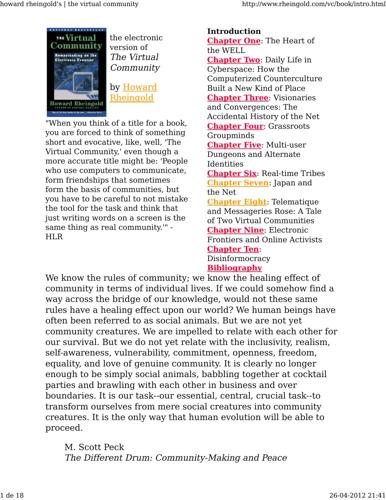
Howard Rheingold
by
The Virtual Community Homesteading on the Electronic Frontier-Perseus Books (1993)
Published 26 Apr 2012
Mandel, who joined the WELL the same day as Dhawk, a few weeks before I joined, was another one of the instant online regulars, along with me, the freelance writer, and Onezie, the schoolteacher, and Dhawk, the Baptist minister turned Unix hacker, and Maddog, the Deadhead radio producer, and a dozen others. Mandel's employer is SRI International (which started out as Stanford Research Institute, where Jacques Vallee and Doug Engelbart did some of the pioneering research in computer conferencing in the 1970s). Municipal and national governments and the biggest corporations in the world pay SRI for a few hours of Tom Mandel's pontifications about the future of publishing or paper or transportation or--and here I can see his wicked grin-communication.
…
HLR http://www.rheingold.com/vc/book/3.html Introduction Chapter One: The Heart of the WELL Chapter Two: Daily Life in Cyberspace: How the Computerized Counterculture Built a New Kind of Place Chapter Three: Visionaries and Convergences: The Accidental History of the Net Chapter Four: Grassroots Groupminds Chapter Five: Multi-user Dungeons and Alternate Identities Chapter Six: Real-time Tribes Chapter Seven: Japan and the Net Chapter Eight: Telematique and Messageries Rose: A Tale of Two Virtual Communities Chapter Nine: Electronic Frontiers and Online Activists Chapter Ten: Disinformocracy Bibliography Chapter Three: Visionaries and Convergences: The Accidental History of the Net While driving to work one day in 1950, Douglas Engelbart started thinking about how complicated civilization had become. What were humans going to do about managing this complex new world that technology had helped us create? Engelbart asked himself what kinds of tools we use to help us think. "Symbols" was the answer that came to him, the answer he had been taught as an engineer.
…
As big government and big business line up to argue about which information infrastructure would be better for citizens, it is the right of the citizens to remind elected policymakers that these technologies were created by people who believed that the power of computer technology can and should be made available to the entire population, not just to a priesthood. The future of the Net 26-04-2012 21:43 howard rheingold's | the virtual community 7 de 43 http://www.rheingold.com/vc/book/3.html cannot be intelligently designed without paying attention to the intentions of those who originated it. From ARPANET to NREN: The Toolbuilders' Quest Douglas Engelbart might have remained a voice in the wilderness, one of the myriad inventors with world-changing devices, or at least the plans for them, gathering dust in their garages. And you might still be required to wear a lab coat and speak FORTRAN in order to gain access to a computer. But Engelbart got a job in the early 1960s doing some respectably orthodox computer research at a new think tank in Menlo Park, California, the Stanford Research Institute.

Valley of Genius: The Uncensored History of Silicon Valley (As Told by the Hackers, Founders, and Freaks Who Made It Boom)
by
Adam Fisher
Published 9 Jul 2018
That was the vision of people like Doug Engelbart, Alan Kay… people like that. They were all basically trying to make the world a better place through computing. And personal computing is the most powerful way to extend an individual’s human abilities. That’s the bottom line. So for example, one of the things that Doug always said is “boosting mankind’s capability for coping with complex urgent problems.” That was the point of his work, his life’s work. Andy Hertzfeld: We couldn’t be in the world we are living in today with Doug Engelbart’s approach. Doug Engelbart did not care about making his software accessible.
…
Jeff Skoll: I get this image in my head of these very powerful overgrown kids who don’t quite know what they have, and the rest of the world is just sort of at their disposal, and so what happens next? BOOK ONE AMONG THE COMPUTER BUMS The best way to predict the future is to invent it. —ALAN KAY The Big Bang Everything starts with Doug Engelbart Doug Engelbart was the first to actually build a computer that might seem familiar to us, today. He came to Silicon Valley after a stint in the Navy as a radar technician during World War Two. The computer then (and, in postwar America, there was only one computer) was used to calculate artillery tables.
…
The product of these two factors, complexity and urgency, had transcended what humans can cope with. It suddenly flashed that if you could do something to improve human capability to deal with that, then you’d really contribute something basic. That just resonated. Jane Metcalfe: Everything starts with Doug Engelbart. Doug Engelbart: It unfolded rapidly. I had read about computers. I think it was just within an hour that I had the image of sitting at a big CRT screen with all kinds of symbols, new and different symbols, not restricted to our old ones. The computer could be manipulating, and you could be operating all kinds of things to drive the computer.
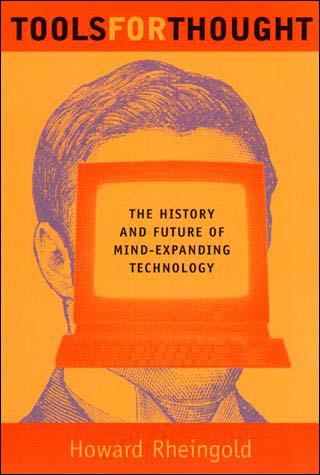
Tools for Thought: The History and Future of Mind-Expanding Technology
by
Howard Rheingold
Published 14 May 2000
Tools For Thought by Howard Rheingold April, 2000: a revised edition of Tools for Thought is available from MIT Press, including a revised chapter with 1999 interviews of Doug Engelbart, Bob Taylor, Alan Kay, Brenda Laurel, and Avron Barr. Tools for Thought is an exercise in retrospective futurism; that is, I wrote it in the early 1980s, attempting to look at what the mid 1990s would be like. My odyssey started when I discovered Xerox PARC and Doug Engelbart and realized that all the journalists who had descended upon Silicon Valley were missing the real story. Yes, the tales of teenagers inventing new industries in their garages were good stories.
…
After thirty often-frustrating years of pursuing a dream that the computer industry has long ignored, Doug Engelbart still can't keep the excitement out of his soft voice and the faraway look out of his eyes when he talks about the prospects he foresaw at twenty-five, and has pursued ever since. But he's not sure whether today's generation of computerists, with all their fancy hardware, are getting any closer to the real issues. Although history has proved him to be an accurate visionary in many ways, but perhaps a less-than-ideal manager of projects and people, and even his friends use the word "stubborn" in describing his attitudes about his theories, Doug Engelbart still wields the power of a quiet person.
…
Indeed, the idea that people could use computers to amplify thought and communication, as tools for intellectual work and social activity, was not an invention of the mainstream computer industry nor orthodox computer science, nor even homebrew computerists. If it wasn't for people like J.C.R. Licklider, Doug Engelbart, Bob Taylor, Alan Kay, it wouldn't have happened. But their work was rooted in older, equally eccentric, equally visionary, work, so I went back to piece together how Boole and Babbage and Turing and von Neumann -- especially von Neumann - created the foundations that the later toolbuilders stood upon to create the future we live in today.
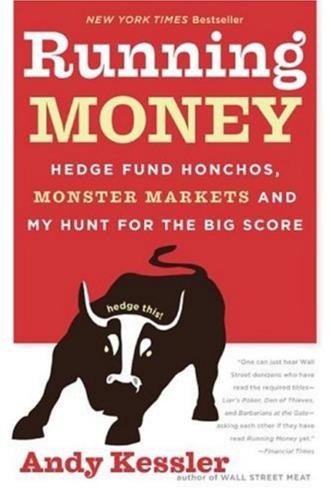
Running Money
by
Andy Kessler
Published 4 Jun 2007
Especially from you, Mr. Tech Investor.” “What do you mean?” “Everything you use today on your PC, Doug Engelbart demo’ed 30 years ago.” “Like what?” “Like the mouse.” “I thought that was Steve Jobs.” “Nope.” “OK, I was just kidding. Jobs stole it from Xerox PARC.” “Wrong again. It was Doug’s.” “What else?” “Hypertext.” “I thought that was that whacky Xanadu guy, Nelson something or other.” “Wrong again, sport Doug. Oh my god, here he comes!” Sharon exclaimed. “I just wanted to thank you for inviting me. I’m Doug Engelbart.” “Well, you are more than welcome. I’ve wanted to meet you The Augmenter 119 because we have four boys over here that create enough noise to simulate a small but effective nuclear device.
…
It was time to find out more about my neighbor, who somehow must have gone deaf over the years, if he can’t hear my kids screaming. A quick Web search the next day for Doug Engelbart pulled up a bunch of news stories. There was a picture of him getting some sort of medal from Bill Clinton. Hey, that’s pretty cool. It was for scientific achievement or some such thing. I scanned the article, and it wasn’t until the last paragraph that I read that Doug Engelbart invented the mouse. So, it really wasn’t Steve Jobs. Almost every other article described a meeting of the American Federation of Information Processing Societies’ Fall Joint Computer Conference held in San Francisco.
…
Maybe the alphabet analogy is a good one, but after thinking about it, I think Doug Engelbart is a modern King James. I know that sounds odd, but so does scaling human knowledge. Think about it—the King James Bible took religion out of the hands of the high priests and put it into the hands of the people. An entire generation became literate just to be able to read the King James version of the Bible. These same people went on to work in manufactories of the Industrial Revolution, where literacy came in handy to speed up training of workers. Doug Engelbart’s augmentation effort took computers out of the hands of the high priests of the corporate information technology centers.
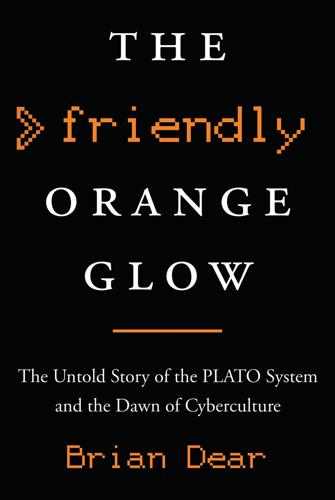
The Friendly Orange Glow: The Untold Story of the PLATO System and the Dawn of Cyberculture
by
Brian Dear
Published 14 Jun 2017
A Fork in the Road Interview Sources Author’s Interviews: Alpert (2003a, 2003b); Donald Bitzer (1986, 1987, 2003); Blomme (2013); Frankel (1997); Goldberg (1987); Goldman (2003); Hiltzik (2003); Kay (1987, 1988); Liddle (2003); Pake (2003); Papert (1987); Propst (1997a, 1997b); Tenczar (1986, 1987, 2003). Other Interviews: Kay (2012, 2013, 2016). Published Sources Doug Engelbart Institute, “Doug’s 1968 Demo.” Retrieved 2014-09-16 from http://www.dougengelbart.org/firsts/dougs-1968-demo.html. Engelbart, D., and B. English. “A Research Center for Augmenting Human Intellect,” in Proceedings of the 1968 Fall Joint Computer Conference, Vol. 33. San Francisco, December 9, 1968, 395–410.
…
It was not clear that anyone ever would. This is where Bitzer and PLATO began poking around. Through their research they found patents filed in the late 1950s that were focused on gas plasma devices. In retrospect, the work is remarkable if for no other reason than that it was undertaken by none other than Douglas Engelbart, who, by the time Bitzer and company came across his patents, had already abandoned the research and moved over to a project that would lead to inventing the mouse and that inspired—perhaps launched—the Silicon Valley personal computing revolution. But back in the 1950s Engelbart was trying to make a name for himself with gas plasma matrices for display and memory use.
…
We already had the idea that somehow the novice programmer should be able to program on it and it had an object-oriented language on the first one that I designed but not terribly well-integrated into the user interface.” Kay was influenced by the work of Ivan Sutherland, also at the University of Utah, who was a pioneer in computer graphics, as well as Douglas Engelbart, who had long ago abandoned his plasma storage device research to embark on research into user interfaces and online software for “human augmentation,” resulting in, among other things, the invention of the mouse. Kay also stumbled upon Wallace Feurzieg’s and Seymour Papert’s LOGO work under way in Massachusetts.
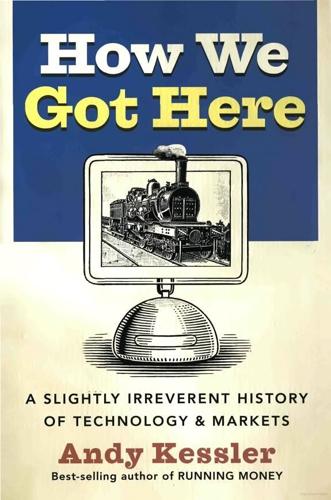
How We Got Here: A Slightly Irreverent History of Technology and Markets
by
Andy Kessler
Published 13 Jun 2005
The name was quickly changed to UNIX. On December 9, 1968, a symposium was held in San Francisco called the American Federation of Information Processing Societies' Fall Joint Computer Conference. With a billing like that, I’ll bet you’re sorry you missed it. A group of researchers at the Stanford Research Institute led by Doug Engelbart had been working since 1962 on a topic they called “Augmented Human Intellect,” and were set to present their findings. A snoozer right? It would turn out to be one of the most important gatherings in technological history. Engelbart got up and demonstrated a few things his team was playing with, built onto something called NLS or oN Line System.
…
The 1,000-plus attendees were stunned. This was 1968, with hippies roaming aimlessly through San Francisco. Yet here was this guy who laid out the map for the personal computer industry and Internet that would unfold over the next 35-plus years. And the microprocessor was still two years away from being invented! Doug Engelbart is the unsung hero of the computer and information revolution. And I’m not just saying that because he lives next door to me and doesn’t call the police when my kids are outside screaming so loud that sometimes I feel like calling in the National Guard to quiet them down. Engelbart’s augmentation ideas, while not implemented for another 15 years, took the horizontalization of the technology business a step further.
…
Augmenting often meant replacing, and helping those who remained. It also meant the creation of jobs elsewhere to create these tools. SOFTWARE AND NETWORKS 135 Bill Gates and Steve Jobs and Michael Dell and Lotus spreadsheet founder Mitch Kapor - these guys are great implementers. More power and riches to them, of course, but Doug Engelbart laid out their future and that of the personal computer. Not much more needs to be said (that others haven’t already overwritten.) An entire industry followed Doug’s map to create high margin intellectual property. Computers were not just for boring accounting functions; they really could augment the human race, and increase efficiency and productivity by replacing costly repetitive human functions. *** From the 1978 introduction of the Apple II computer to the 1981 announcement of the IBM PC (IBM bean counters estimated they would sell 250,000 over the life of the PC), the world has been flooded with smaller, cheaper and faster computers: 100-plus million new ones get sold every year.
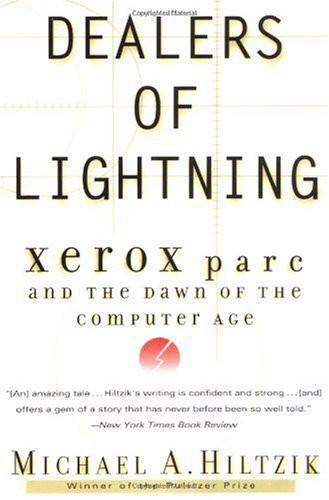
Dealers of Lightning
by
Michael A. Hiltzik
Published 27 Apr 2000
The screen showed how a user could select a single word in a text document and be instantly transported to the relevant portion of a second document—the essence of hypertext, found today, some thirty years later, on every World Wide Web page and countless word-processed documents. At the conclusion of the bravura performance Doug Engelbart, previously a prophet without honor, was rewarded with a standing ovation. In 1971 Taylor, whose ARPA funds had helped pay for that demo, was intent on somehow importing Engelbart’s interactive vision into PARC. The only question was how to do it without also importing Doug Engelbart. The problem was that the master’s inspirational dreams were inseparable from his inflexible and self-righteous disposition. One admirer called him “a prophet of biblical dimensions,” a role he fit down to his physical appearance.
…
His main job was to write software for POLOS, the “PARC On-Line Office System,” which was Bill English’s scheme to reengineer Doug Engelbart’s interactive multimedia system using the superior resources that Xerox money could buy. The work was being handled by a group of engineers English had raided from Engelbart, and they went at it with all the quasi-religious enthusiasm they had once felt working for the great man himself. What made Tesler feel like a stranger was a rather fundamental disagreement he had with his colleagues: He thought POLOS was ridiculous. Larry Tesler had never worked for Doug Engelbart. Not having partaken of the master’s heady wine, he was troubled by POLOS’s complexity.
…
He sketched out something called the “memex,” which he described as “a device in which an individual stores all his books, records, and communications, and which is mechanized so that it may be consulted with exceeding speed and flexibility.” The mechanism of consultation would be “associative indexing…whereby any item may be caused at will to select immediately and automatically another. This is the essential feature of the memex.” Doug Engelbart first encountered Bush’s memex in a magazine article he found in an a Red Cross library in Manila, where he was awaiting transport home from his World War II service. He succumbed to the author’s vision of a world of interlinked data as though to a sorcerer’s spell. By the time he left Berkeley a few years later with a Ph.D. in engineering, he had decided that his mission in life would be, in effect, to turn the memex into reality.

Is the Internet Changing the Way You Think?: The Net's Impact on Our Minds and Future
by
John Brockman
Published 18 Jan 2011
Now there is a nearly infinite pool of accessible information that becomes my knowledge in a heartbeat measured in bits per second. For those of us who wallow in the world of knowledge for pleasure and profit, the Internet has become a vast extension of our potential selves. The modern Internet has achieved much of what Ted Nelson articulated decades ago in his vision of the Xanadu project, or Doug Engelbart in his human augmentation vision at SRI. Nearly all useful knowledge is now accessible instantaneously from much of the world. Our effective personal memories are now vastly larger—essentially infinite. Our identity is embedded in what we know. And how I think is an expression of that identity.
…
When I started out as a freelance writer in the 1970s, my most important tools were a library card, a typewriter, a notebook, and a telephone. In the early 1980s, I became interested in the people at Xerox Palo Alto Research Center (PARC) who were using computers to edit text without physically cutting, pasting, and retyping pages. Through PARC, I discovered Douglas Engelbart, who had spent the first decade of his career trying to convince somebody, anybody, that using computers to augment human intellect was not a crazy idea. Engelbart set out in the early 1960s to demonstrate that computers could be used to automate low-level cognitive support tasks, such as cutting, pasting, and revising text, and also to enable intellectual tools, such as the hyperlink, that weren’t possible with Gutenberg-era technology.
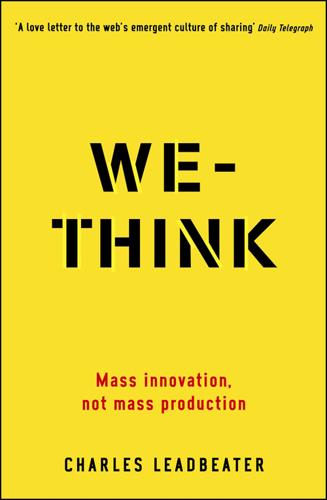
We-Think: Mass Innovation, Not Mass Production
by
Charles Leadbeater
Published 9 Dec 2010
The best way through this plethora of material, to find the person and the information you are looking for, is to rely on We-Think: the power of shared intelligence to sort wheat from chaff, whether through search engines, collaborative filters, wikis, or recommendations from trusted blogs and friends on social networks.15 The web’s tendency to promote sharing is not just a matter of necessity and some clever software. It has deeper roots in the academic and hippie culture that spawned the web in the 1960s. The best way to understand that story is to start with Doug Engelbart. The digital communards Nearly 40 years ago, Doug Engelbart stood before the cream of America’s fast-emerging computer industry gathered in Brooks Hall in San Francisco. On a giant screen he showed how they might: edit text directly on the screen of a computer using a keyboard and a mouse; insert links into a document leading to another related document; mix text with graphics and video; and connect one computer to another several miles away using a phone line.
…
The spread of the web means more people than ever can have their say, post their comment, make a video, show a picture, write a song. The more I-Think there is, the more content and information we create, the more we will need We-Think to sort it. The anti-industrial ideas of the 1960s counter-culture, bringing together Doug Engelbart’s vision of distributed and decentralised technologies and Fred Moore’s ethic of sharing, underpin hopes that we might still be able to create egalitarian, self-governing communities. Finally, We-Think revives pre-industrial forms of organisation: the commons, peer-to-peer working, community innovation and folk creativity.
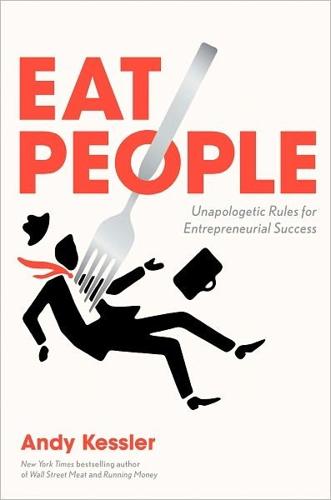
Eat People: And Other Unapologetic Rules for Game-Changing Entrepreneurs
by
Andy Kessler
Published 1 Feb 2011
Often, technology is productive for early adopters who easily figure out how to use it, and then painfully unproductive for the next several hundred million people to jump onboard. This can last for years and years. But real success comes from hiding the technology from users. Inventor (and my next-door neighbor) Doug Engelbart had a dream of human augmentation, and gave the ultimate demonstration at an Association of Computing Machinery meeting back in 1968, with menus and hypertext and his wooden three-button mouse. You can find the video online in scratchy black and white. Well worth the watch. His vision took decades to implement.
…
Or show me what shows I ought to be watching, based on what I’ve already watched, what my friends are watching, what’s being talked about in blogs I read, what’s being talked about in blogs in general, what shows are coming up on the Ottoman Empire and on and on. I can search for this stuff myself, but who has time, or the attention span? As Doug Engelbart points out, augment me. Tell me what restaurants to go to, what articles to read, what fashion to overpay for and on and on. This is not easy stuff to pull off. Riches will be heaped on Free Radicals who solve the adaptive puzzle, because at the end of the day, augmentation is the ultimate in productivity and we will all benefit.

Paper Knowledge: Toward a Media History of Documents
by
Lisa Gitelman
Published 26 Mar 2014
Xerographic reproduction and the versioning of digital objects thus offered contexts for one another, even apart from the idea of digital copying. In this early era of minimal networking, digital copying remained encumbered by the necessity of transporting programs and data on magnetic tape or other hard media. Even the networked contexts of the day prove this point. In 1967 Douglas Engelbart and his team at the Stanford Research Institute were challenged to provide documentation for the Advanced Research Projects Agency Network (better known as arpanet ) as it came online. There were a few things they knew for sure: they wanted users to be able to access documentation remotely across the network; they were certain that the distribution of hardcopy documents was also necessary, possibly in the form of microfiche; and they would obviously need a system of documentation that would allow frequent updating.
…
A much more direct line of descent— though across a longer span of time—might be drawn between Sketchpad and pdf , in the very least since John Warnock studied at the University of Utah after Sutherland joined the faculty there. What happened between these early page images and the development of pdf was the storied development of personal computers, and there is no need to rehearse that story here, since so many of its features are by now familiar: Douglas Engelbart and the demo; Xerox’s Palo Alto Research Center and the Alto; Microbrew, Macintosh, and Microsoft.31 N E A R P R I N T A N D B E YO N D PA P E R 121 pdf technology would become both thinkable and desirable in the context of personal computing in the 1980s, and its conception would stem in particular from the emergence of desktop publishing as an application for personal computers toward the middle of that decade.
…
Bourne and Trudi Bellardo Hahn, A History of Online Information Services, 1963–1976 (Cambridge, MA: mit Press, 2003), 64, 65. 26. Ibid., 326. 27. Ivan Edward Sutherland, “Sketchpad, A Man-Machine Graphical Communication System,” PhD diss., Massachusetts Institute of Technology, 1963. 28. Thierry Bardini, Bootstrapping: Douglas Engelbart, Coevolution, and the Origins of Personal Computing (Stanford, CA: Stanford University Press, 2000), 84. See also Michael Hiltzik, Dealers of Lightning: Xerox parc and the Dawn of the Computer Age (New York: Harper Collins, 1999), 90–91. 29. Ivan Edward Sutherland, “Sketchpad, A Man-Machine Graphical Communication System,” PhD diss., Massachusetts Institute of Technology, 1963, 70–71. 30.
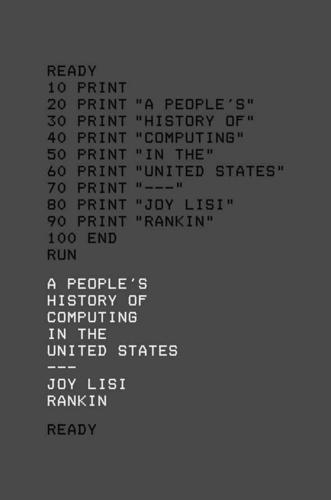
A People’s History of Computing in the United States
by
Joy Lisi Rankin
In April 1963, Kemeny delivered a speech to the board of trustees in which he argued that computing would be a necessary skill for all of Dartmouth’s graduates, regardless of their professional paths.68 He underscored that their immediate access to computing resources was a worthy goal for the college. Kemeny’s conviction on this point set him apart from many other scholars and computing enthusiasts at the time. Better-k nown computer visionaries such as J. C. R. Licklider and Douglas Engelbart envisioned futures of computers in the hands of individuals, but they pursued their ideas through small research labs. They worked to improve the technology itself, rather than figuring out a way to bring existing technology to as many p eople as possible.69 In contrast, Kemeny displayed a passion for widespread computing born from witnessing the creativity and enthusiasm of a handful of engaged students.
…
We even had touch screens installed later that year, which as an 11-year-old I’m sure I thought were the coolest.”96 Meller’s feast-for-the-senses handbook and Fahey’s gaming enthusiasm undermine the most familiar story about where personal computers came from. That story usually features Douglas Engelbart, Xerox PARC, and Steve Jobs—Silicon Valley characters all. The very short version of that story is that Engelbart’s 1968 demonstration of personal computing shaped the Alto personal computer built by PARC in the 1970s, and Steve Jobs stole the fire of the Alto— namely, the menus and windows on its screen and its mouse—and gave it to the people in the form of the Apple Macintosh.
…
The commitment to GE equipment was also expressed in Kurtz, Rieser, and Meck, “Application to the National Science Foundation.” 68. Kemeny, Random Essays. 69. M. Mitchell Waldrop, The Dream Machine: J. C. R. Licklider and the Revolution That Made Computing Personal (New York: Penguin Books, 2002); Thierry Bardini, Bootstrapping: Douglas Engelbart, Coevolution, and the Origins of Personal Computing (Stanford, CA: Stanford University Press, 2000). 70. Kemeny, Random Essays. 71. Kurtz, “BASIC Session,” 519–520. 72. Kurtz, “BASIC Session.” 73. Kemeny, “A Computing Center at a Liberal Arts College.” 74. Kurtz, oral history interview, 25. 75.

The Code: Silicon Valley and the Remaking of America
by
Margaret O'Mara
Published 8 Jul 2019
The decision disappointed the students, who had hoped that SRI would be shut down altogether.2 Had that happened, Stanford would have squelched an operation that was building an entirely new universe of connected, human-scale computing—the home of Shaky the Robot, of Dean Brown’s education lab, and of Doug Engelbart’s “research center for augmenting human intellect.” In Engelbart’s emphasis on networked collaboration, this low-key member of the Greatest Generation was completely in sync with the radical political currents swirling around the Stanford campus and the bland suburban storefronts of the South Bay.
…
“Xerox Plans Laboratory for Research in California,” read the tiny item buried inside The New York Times business section in the spring of 1970. Its purpose, said Xerox research chief Jacob Goldman, was “to advance data processing technology.”5 The innocuous announcement marked the launch of a venture that eventually turned Doug Engelbart’s vision into market reality. Ironically, although Xerox bankrolled the enterprise, the company was not the ultimate beneficiary of the breakthroughs it sponsored. It was not a computer company, and the copier business was simply too lucrative to justify creating entirely new product lines and sales channels in order to become one.
…
At a time and place dominated by the semiconductor industry, “with its famously macho disdain for women,” as PARC scientist Lynn Conway put it, there was remarkable gender diversity in its ranks. The new hires took advantage of Xerox’s abundant resources and loose oversight to creatively interpret Goldman’s definition of “data processing technology,” pursuing projects inspired by Doug Engelbart’s ideas about augmented intelligence and by hacker culture more generally. Engelbart’s SRI operation had drifted after the great demo—investors couldn’t figure out the devices’ commercial potential—and several members of his team moved over to PARC. Still more came from the academic engineering diaspora of Stanford and Berkeley.
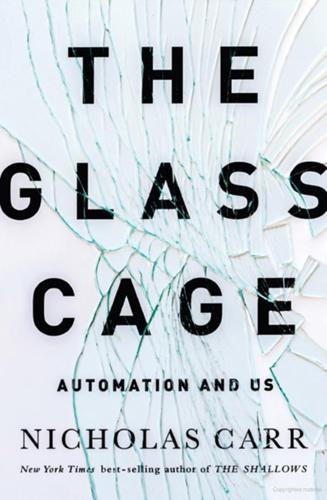
The Glass Cage: Automation and Us
by
Nicholas Carr
Published 28 Sep 2014
Government Printing Office, 1966), 201–221. 37.George Dyson, comment on Edge.org, July 11, 2008, edge.org/discourse/carr_google.html#dysong. 38.For a lucid explanation of machine learning, see the sixth chapter of John MacCormick’s Nine Algorithms That Changed the Future: The Ingenious Ideas That Drive Today’s Computers (Princeton: Princeton University Press, 2012). 39.Max Raskin and Ilan Kolet, “Wall Street Jobs Plunge as Profits Soar,” Bloomberg News, April 23, 2013, bloomberg.com/news/2013-04-24/wall-street-jobs-plunge-as-profits-soar-chart-of-the-day.html. 40.Ashwin Parameswaran, “Explaining the Neglect of Doug Engelbart’s Vision: The Economic Irrelevance of Human Intelligence Augmentation,” Macroresilience, July 8, 2013, macroresilience.com/2013/07/08/explaining-the-neglect-of-doug-engelbarts-vision/. 41.See Daniel Martin Katz, “Quantitative Legal Prediction—or—How I Learned to Stop Worrying and Start Preparing for the Data-Driven Future of the Legal Services Industry,” Emory Law Journal 62, no. 4 (2013): 909–966. 42.Joseph Walker, “Meet the New Boss: Big Data,” Wall Street Journal, September 20, 2012. 43.Franco “Bifo” Berardi, The Soul at Work: From Alienation to Automation (Los Angeles: Semiotext(e), 2009), 96. 44.A.

Artificial Unintelligence: How Computers Misunderstand the World
by
Meredith Broussard
Published 19 Apr 2018
When you look closely, there’s always a logical predecessor and a team of people who worked on the idea for months or years. Jobs paid for a tour of Xerox PARC, saw the idea of a GUI, and licensed it. The Xerox PARC mouse-and-GUI computer was a derivative of an earlier idea, the oN-Line System (NLS), demonstrated by Doug Engelbart in the “mother of all demos” at the 1968 Association for Computing Machinery conference. We’ll look at this intricate history in chapter 6. The next layer to think about is another software layer: a program that runs on top of an operating system. A web browser (like Safari or Firefox or Chrome or Internet Explorer) is a program that allows you to view web pages.
…
The foundation’s multi-million-dollar trust is designed to keep the power on for decades.)15 Reading about Silicon Valley billionaires’ desires to live to age two hundred or talk with little green men, it’s tempting to ask: Were you high when you thought of that? Often, the answer is yes. Steve Jobs dropped acid in the early 1970s after he dropped out of Reed College. Doug Engelbart, the NASA- and ARPA-funded researcher who performed the 1968 “mother of all demos” that showed for the first time all the hardware and software elements of modern computing, dropped acid at the International Foundation for Advanced Study, the legal home for academic inquiry into LSD that lasted until 1967.
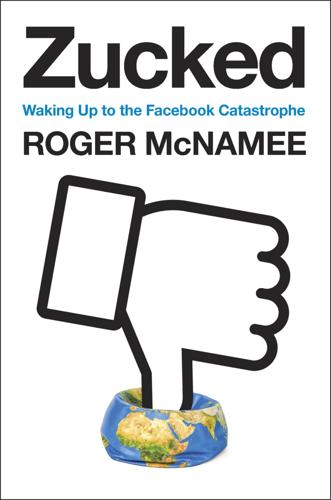
Zucked: Waking Up to the Facebook Catastrophe
by
Roger McNamee
Published 1 Jan 2019
Even so, brilliant people imagined a world where small computers optimized for productivity would be connected on powerful networks. In the sixties, J. C. R. Licklider conceived the network that would become the internet, and he persuaded the government to finance its development. At the same time, Douglas Engelbart invented the field of human-computer interaction, which led to him to create the first computer mouse and to conceive the first graphical interface. It would take nearly two decades before Moore’s Law and Metcalfe’s Law could deliver enough performance to enable their vision of personal computing and an additional decade before the internet took off.
…
(Massive server farms based on PC technology now attract any new application that needs mainframe-class processing; it is a much cheaper solution because you can use commodity hardware instead of proprietary mainframes.) ARPANET, the predecessor to today’s internet, began as a Department of Defense research project in 1969 under the leadership of Bob Taylor, a computer scientist who continued to influence the design of systems and networks until the late nineties. Douglas Engelbart’s lab was one of the first nodes on ARPANET. The goal was to create a nationwide network to protect the country’s command and control infrastructure in the event of a nuclear attack. The first application of computer technology to the consumer market came in 1972, when Al Alcorn created the game Pong as a training exercise for his boss at Atari, Nolan Bushnell.
…
Through the lens of this book, you will get a clear view of the culture and internal practices of Facebook and other platforms. Valley of Genius: The Uncensored History of Silicon Valley, by Adam Fisher (New York: Twelve, 2018), is a collection of interviews and quotes from participants at nearly every stage of Silicon Valley’s development. The book begins in the sixties, with Douglas Engelbart, and marches steadily to the present. The interview with Facebook founders and early employees is essential reading. There are also illuminating interviews with the early people at Google and Twitter. There are two works of fiction that prepared me to recognize the disturbing signals I picked up from Facebook in 2016.
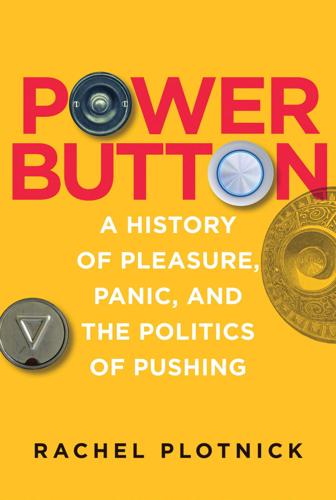
Power Button: A History of Pleasure, Panic, and the Politics of Pushing
by
Rachel Plotnick
Published 24 Sep 2018
Jack Geyer, “The Pillow Pilots of the Push-Button Age,” Los Angeles Times, September 24, 1952: A5. 22. John H. Averill, “Underexercised Nation,” Los Angeles Times, December 6, 1961: C1. 23. “Even Crossing Street Can Be Big Problem in Push-Button World,” Los Angeles Times, December 10, 1961: WS5. 24. Douglas Engelbart, quoted in Thierry Bardini, Bootstrapping: Douglas Engelbart, Coevolution, and the Origins of Personal Computing (Stanford, CA: Stanford University Press, 2000), 99. 25. Engelbart in Bardini, Bootstrapping, 101. 26. Logitech, “Introducing the Most Agile Mouse Ever to Set Foot on a Desktop,” Byte (1998): 1. 27. Soren Pold, “Button,” in Software Studies: A Lexicon, ed.
…
To consider how push-button mechanisms have achieved such an entrenched position in the practices of everyday life, it is critical to consider how designers began to think about buttons as part of computer technologies beginning in the late 1960s. Although this book has treated “digital” operation as a function of the digit—the finger—such a term inevitably recalls the digitalness (consisting of binary 1s and 0s) of computers. Buttons and computation were first significantly linked together in 1968 when Douglas Engelbart created the first prototype for a computer mouse. After eliminating other possible designs to manipulate digital items on computer screens like light pens and light guns, Engelbart settled on the mouse as a suitable concept. He commented about the invention that, “You didn’t have to pick it up and you could put buttons on it, which helped.”24 It is notable that the inventor viewed the mouse, according to one author, as “part of an effort to optimize basic human capabilities in synergy with ergonomically and cognitively more efficiently designed artifacts.”25 Like his predecessors thinking about automobile steering wheels with buttons and electricians considering the placement of push-button light switches, Engelbart concerned himself with how humans could more naturally and strategically engage with computers through their hands as well as their whole bodies as part of systems for communication and control.
…
“President Ballard Addresses Baltimore Section.” N.E.L.A. Bulletin 7, no. 2 (1920): 135–136. Baker, Ray Stannard. “The Automobile in Common Use.” McClure’s Magazine 13, no. 3 (1899): 4. Bakhtin, Mikhail. Rabelais and His World. Translated by H. Iswolsky. Bloomington: Indiana University Press, 1993. Bardini, Thierry. Bootstrapping: Douglas Engelbart, Coevolution, and the Origins of Personal Computing. Stanford, CA: Stanford University Press, 2000. Barnard, Charles. “Some Queer Houses.” Youth’s Companion 65, no. 51 (1892): 2. Batchelder, Charles Clarence. “The Grain of Truth in the Bushel of Christian Science Chaff.” Popular Science 72, no. 13 (1908): 211–223.
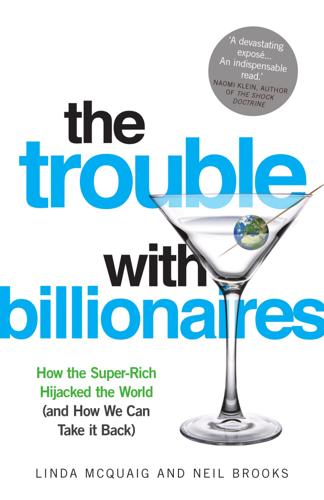
The Trouble With Billionaires
by
Linda McQuaig
Published 1 May 2013
Notes Essinger: ‘Ever since the late 1950s, this has tended to be the pattern for breakthroughs in computing: they have been the result of collaborative and joint effort by large teams composed of often anonymous people rather than by individual pioneers.’4 Some individual pioneers do stand out, most notably Douglas Engelbart, a visionary engineer driven by a desire to develop computers to help solve the urgent problems facing humanity, rather than just as commercial tools enabling people to work faster. With funding from the US Air Force in the early 1960s, Engelbart, along with engineer Bill English, invented some of the key features that we associate with personal computers today, such as the mouse.5 Up until this point, computers, though immensely powerful, were essentially inaccessible to humans, except to a few initiates possessing sophisticated programming skills.
…
So if we were to present the story of the development of the personal computer as a stage play, it would be a rich and complex drama with a long list of characters. From early scenes featuring Joseph Marie Jacquard and his punched-card technology, the play would go on to include starring roles for Charles Babbage, Herman Hollerith, Thomas John Watson, J. Presper Eckert, John Mauchly, Douglas Engelbart and Bill English, with a host of other largely unidentified characters playing crucial supporting roles onstage and off. Toward the end of this rather long drama, there’d be an intriguing subplot about how technological innovator Gary Kildall thought he had a deal with IBM, only to discover his friend Bill Gates had sold IBM an adaptation of Kildall’s own operating system for the first mass-market personal computer.
…
Hansen, ‘Climate change is here – and worse than we thought’, Washington Post, 3 August 2012. 5 Richard Elliot Benedick, ‘The Improbable Montreal Protocol: Since, Diplomacy and Defending the Ozone Layer’, Case Study Prepared for the 2004 Policy Colloquium of the American Meteorological Society, reproduced in Donald Kaniaru (ed.), The Montreal Protocol (London: Cameron May Ltd., 2007). 6 Bill McKibben, ‘Global Warming’s Terrifying New Math’, Rolling Stone, 19 July 2012. 7 Sabrina Fernandes & Richard Girard, Corporations, Climate and the United Nations (Ottawa: Polaris Institute, November 2011), p. 3. 8 Quoted in Fernandes & Girard, ibid., p. 14. 9 Ibid., p. 12. 10 Mark Townsend & Paul Harris, ‘Now the Pentagon tells Bush: climate change will destroy us’, The Observer, 22 February 2004. 11 Frederick Solt, ‘Economic Inequality and Democratic Political Engagement’, American Journal of Political Science, vol. 52, no. 1, January 2008, pp. 48–60. 12 Martin Gilens, ‘Inequality and Democratic Responsiveness’, Public Policy Quarterly 69, no. 5 (2005), p. 794. 13 Richard Elliot Benedick, ‘The Improbable Montreal Protocol: Since, Diplomacy and Defending the Ozone Layer’, Case Study Prepared for the 2004 Policy Colloquium of the American Meteorological Society, reproduced in Kaniaru (ed.), The Montreal Protocol. 14 Ross Gelbspan, The Heat is On: The Climate Crisis, the Cover-Up, the Prescription (Reading, MA: Perseus Books, 1998), pp. 76–7. 5 Why Bill Gates Doesn’t Deserve His Fortune 1 The story of IBM’s early dealings with Gary Kildall and Bill Gates is recounted in Harold Evans, They Made America (New York: Little Brown, 2004), pp. 402–19. See also Steve Hamm & Jay Greene, ‘The Man Who Could Have Been Bill Gates’, BusinessWeek, 25 October 2004. 2 Evans, They Made America, pp. 402–19. 3 James Essinger, Jacquard’s Web (Oxford: Oxford University Press, 2004), p. 37. 4 Ibid., p. 249. 5 Thierry Bardini, Bootstrapping: Douglas Engelbart, Coevolution, and the Origins of Personal Computing (Stanford, CA: Stanford University Press, 2000), pp. 81–102. 6 Gar Alperovitz & Lew Daly, Unjust Deserts (New York: The New Press, 2008), p. 58. 7 Ibid., pp. 59–61. 8 Ibid., p. 60. 9 Cited in ibid., p. 63. 10 Robert M. Solow, ‘Growth Theory and After’, Nobel lecture, 8 December 1987, http://www.nobelprize.org. 11 Herbert A.
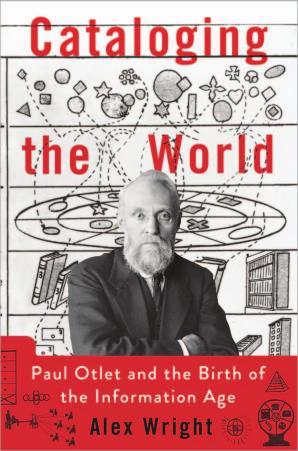
Cataloging the World: Paul Otlet and the Birth of the Information Age
by
Alex Wright
Published 6 Jun 2014
The conventional history of the Internet traces its roots through an Anglo-American lineage of early computer scientists like Charles Babbage, Ada Lovelace, and Alan Turing; networking visionaries like Vinton G. Cerf and Robert E. Kahn; as well as hypertext seers like Vannevar Bush, J. C. R. Licklider, Douglas Engelbart, Ted Nelson, and of course Tim Berners-Lee and Robert Cailliau, who in 1991 released their first version of the World Wide Web. The dominant influence of the modern computer industry has placed computer science at the center of this story. Nonetheless Otlet’s work, grounded in an age before microchips and semiconductors, opened the door to an alternative stream of thought, one undergirding our present-day information age even though it has little to do with the history of digital computing.
…
Ultimately, that network came to consist of a small group of computing centers 248 T he I ntergalactic N etwor k located at several leading research centers, including MIT, CarnegieMellon, the University of Utah, the Rand Corporation, Stanford Research Institute (SRI), and the University of California campuses at Berkeley, Santa Barbara, and Los Angeles. While working with the SRI team, Licklider championed the work of a researcher named Douglas Engelbart, who spent much of the 1960s working on this early proto-hypertext tool known as the oN-Line System (which I will discuss further later). With the financial backing of the U.S. military, Licklider launched a series of landmark projects that would also pave the way for, among other things, the modern UNIX operating system, which provided a template for solving a larger problem: how to engineer a network that allowed a number of far-flung computers—running on different systems and with different operating capacities—to communicate with each other.
…
But Bush’s ideas percolated in the background for years, until a new generation of information scientists would build on his vision with the first computer-based hypertext experiments of the 1960s. Years later, Licklider would dedicate his report, Libraries of the Future, to Vannevar Bush. On December 9, 1968, Douglas Engelbart took the stage before a packed house at Brooks Hall Auditorium in San Francisco to give his first public demonstration of the oN-Line System (NLS). Dressed in the white shirt of a working engineer, the soft-spoken former Navy telegraph operator demonstrated a working model of a system that struck many of the idealistic San Francisco counterculture types in attendance as representing nothing short of a revolution in human consciousness.

This Is for Everyone: The Captivating Memoir From the Inventor of the World Wide Web
by
Tim Berners-Lee
Published 8 Sep 2025
Nelson envisioned a universal, interconnected information space where every piece of content could be linked to every other piece, reflecting the non-linear nature of human thought. The system worked through a centralized system, which could ensure the integrity of all links and backlinks, to be run by the Xanadu Operating Company. (Nelson was never able to get Xanadu past the prototype stage.) Building on these ideas, in 1968 the visionary computer scientist Douglas Engelbart gave a ninety-minute presentation at the San Francisco Civic Auditorium, which we now call ‘The Mother of All Demos’. Remember, at this time, computers were gigantic $10 million mainframes that weighed several tons and mostly did scientific maths. They were not intended for regular office use, and many of them didn’t even have monitors.
…
Apple bundled it as a default app with Macintosh computers, and a community of HyperCard enthusiasts grew around it. • So there is your potted history of hypertext – except at the time I was almost totally unaware of these developments! When I was conceptualizing the web as an information-wrangling tool, I had never heard of Ted Nelson nor Douglas Engelbart, and I had never used HyperCard. My introduction to hypertext only came while I was drafting a proposal for my document-linking system, when someone – I cannot remember who, but probably my CERN colleague Robert Cailliau – shared with me the July 1988 edition of the journal Transactions on Computer Systems, produced by the Association for Computing Machinery (ACM).
…
Curious to see if the web was spreading outside my institution, I set up a server log to track how many outside visits info.cern.ch received. By August 1991, I was receiving more than ten page views a day. • In late 1991, I travelled with Robert Cailliau to attend the Hypertext ’91 conference at a hotel in San Antonio, Texas. I brought with me my NeXT computer and a modem, intending to wow the conference attendees (including Douglas Engelbart) by remotely logging into my web server in Switzerland. But no one at the conference had an internet connection! Now, the hypertext community had all sorts of great ideas: video games and digital magazines and CD-ROM encyclopaedias. For whatever reason, no one had thought of using the hyperlink to jump out of one computer and into the next – not even Engelbart.

New Laws of Robotics: Defending Human Expertise in the Age of AI
by
Frank Pasquale
Published 14 May 2020
John Markoff, “The Creature That Lives in Pittsburgh,” New York Times, April 21, 1991, http://www.nytimes.com/1991/04/21/business/the-creature-that-lives-in-pittsburgh.html?pagewanted=all; Rodney Brooks, Flesh and Machines: How Robots Will Change Us (New York: Pantheon, 2002). 29. See John Markoff, Machines of Loving Grace (New York: HarperCollins, 2015), which describes pioneering IA work by Doug Engelbart and a long line of proteges. See also Doug Engelbart, Augmenting Human Intellect: A Conceptual Framework (Washington, DC: Air Force Office of Scientific Research, 1962). 30. Marc Andreessen, “Why Software Is Eating the World,” Wall Street Journal, August 20, 2011, https://www.wsj.com/articles/SB10001424053111903480904576512250915629460. 31.

Dawn of the New Everything: Encounters With Reality and Virtual Reality
by
Jaron Lanier
Published 21 Nov 2017
Instead of goats, the back of the Dodge Dart was now piled with computers, so I could haul around demos of my work. I remember having to occasionally pick bits of old hay out of hard drive slots. I’d show everyone Moondust. I showed it to Alan Kay and his team up at Xerox PARC, to the people at Apple who would end up creating the Mac, to Doug Engelbart’s group at the Stanford Research Institute, to the people at NASA working with flight simulators. One time I hefted one of those giant old CRT monitors up onto a table at this dimly lit dim sum place in an alley near Stanford—to show people Moondust, of course. (Don’t recall the name of the joint, but if anyone wants to figure it out, this was the one that put almond oil in their shrimp dumplings, and everyone talked about that.)
…
Decades later, Ted would say that his greatest regret might have been the font size in that book. 4. Okay, snide reader, I’ll say it for you. I get complaints that my books are too hard to read. So many big words, even as I am apparently challenging digital elitism. I don’t have a perfect answer to this criticism. One must write as who one is. 5. There is another contender, which is Doug Engelbart’s famous first demonstration of productivity software in 1968. Doug showed text editing, windows, pointing and selecting things on the screen, collaborative editing, file versions, video conferencing, and many other designs that have become building blocks of our lives. Sometimes Ivan’s demo is called the “best demo ever,” while Doug’s is called “the mother of all demos,” even though Ivan’s was earlier. 6.

What to Think About Machines That Think: Today's Leading Thinkers on the Age of Machine Intelligence
by
John Brockman
Published 5 Oct 2015
WHEN I SAY “BRUNO LATOUR,” I DON’T MEAN “BANANA TILL” JOHN NAUGHTON Vice-President, Wolfson College, Cambridge; Emeritus Professor of the Public Understanding of Technology, Open University; author, From Gutenberg to Zuckerberg: What You Really Need to Know About the Internet What do I think about machines that think? Well, it depends what they think about and how well they do it. For decades I’ve been an acolyte of Doug Engelbart, who believed that computers were machines for augmenting human intellect. Power steering for the mind, if you like. He devoted his life to the pursuit of that dream, but it eluded him because the technology was always too crude, too stupid, too inflexible to enable its realization. It still is, despite Moore’s Law and the rest of it.
…
Easy: when my artificially intelligent, thinking personal assistant can generate plausible excuses that get me out of doing what I don’t want to do. Should I be bothered by the prospect of thinking machines? Probably. Certainly Nick Bostrom thinks I should. Our focus on getting computers to exhibit human-level intelligence is, he thinks, misguided. We view machines that can pass the Turing Test as the ultimate destination of Doug Engelbart’s quest. But Bostrom thinks that passing the test is just a waypoint on the road to something much more worrying. “The train,” he says, “might not pause or even decelerate at Humanville Station. It is likely to swoosh right by.”4 He’s right: I should be careful what I wish for. IT’S STILL EARLY DAYS NICK BOSTROM Professor, Oxford University; director, Future of Humanity Institute, Oxford Martin School; author, Superintelligence: Paths, Dangers, Strategies First, what I think about humans who think about machines that think: I think that for the most part we’re too quick to form an opinion on this difficult topic.
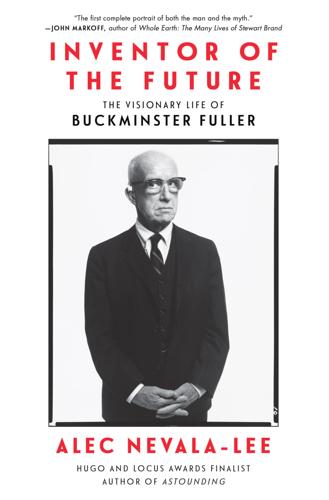
Inventor of the Future: The Visionary Life of Buckminster Fuller
by
Alec Nevala-Lee
Published 1 Aug 2022
Listening carefully to Brand’s description of the fair, Fuller advised him to clarify its intentions, and he expressed concerns that it would become overly political. When Brand asked if a photo of the whole earth might change the world’s perspective, Fuller said, “You’re right. I’ll take back what I said in my letter.” On January 3, 1968, Brand wrote to Fuller about research being conducted in Menlo Park by an engineer named Douglas Engelbart. “The program is operational now using constant on-line intense interaction with computer-driven cathode ray tube displays of text, graphs, and link-node arrays,” Brand explained. “A number of persons at remote consoles can work in interactive concert on a mutually generated display, with mutual access to the computer memory.”
…
Unlike the student activists of the New Left, who emphasized politics and protest, its fans—described by one of Brand’s colleagues as “baling wire hippies”—were drawn to technology, and they would advance far beyond Fuller’s sense of what computers could be. On December 9, 1968, Brand assisted with a talk at the Joint Computer Conference in San Francisco by Douglas Engelbart, who treated computers as tools for communication and information retrieval, rather than for data processing alone. Along with advising on logistics, Brand operated a camera that provided a live feed from Menlo Park as Engelbart demonstrated windows, hypertext, and the mouse. At first, its impact was limited to a handful of researchers, but the presentation would be known one day as the Mother of All Demos
…
If his ideas were uniquely vulnerable to this kind of assimilation, it was a precessional effect of ephemeralization itself, which produced strategies that could be repurposed at minimal cost. In this case, Fuller was content to receive public credit, along with a grant to cover his expenses from Erhard, who personally introduced him to Douglas Engelbart, a member of the est board. Fuller himself would speak to any organization willing to pay. He claimed to never use an agent or promoter, but he was represented by Speakers Unlimited—an agency that advertised his availability alongside its other clients, such as astronomer Carl Sagan and an Austrian body builder named Arnold Schwarzenegger—and he hired a second firm to book lectures on campuses.

How to Change Your Mind: What the New Science of Psychedelics Teaches Us About Consciousness, Dying, Addiction, Depression, and Transcendence
by
Michael Pollan
Published 30 Apr 2018
Subjects reported much greater fluidity in their thinking, as well as an enhanced ability to both visualize a problem and recontextualize it. “We were amazed, as were our participants, at how many novel and effective solutions came out of our sessions,” Fadiman wrote. Among their subjects were some of the visionaries who in the next few years would revolutionize computers, including William English and Doug Engelbart.* There are all sorts of problems with this study—it was not controlled, it relied on the subjects’ own assessments of their success, and it was halted before it could be completed—but it does at least point to a promising avenue for research. The foundation had closed up shop by 1966, but Hubbard’s work in Silicon Valley was not quite over.
…
* The whole notion of cybernetics, the idea that material reality can be translated into bits of information, may also owe something to the experience of LSD, with its power to collapse matter into spirit. Brand thinks LSD’s value to his community was as an instigator of creativity, one that first helped bring the power of networked computers to people (via SRI computer visionaries such as Doug Engelbart and the early hacker community), but then was superseded by the computers themselves. (“At a certain point, the drugs weren’t getting any better,” Brand said, “but the computers were.”) After his experience at IFAS, Brand got involved with Ken Kesey and his notorious Acid Tests, which he describes as “a participatory art form that led directly to Burning Man,” the annual gathering of the arts, technology, and psychedelic communities in the Nevada desert.
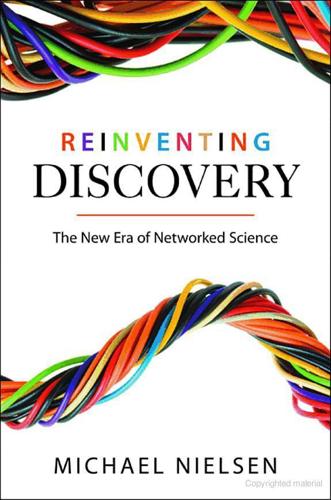
Reinventing Discovery: The New Era of Networked Science
by
Michael Nielsen
Published 2 Oct 2011
Collective intelligence: The idea of using computers to amplify individual and collective human intelligence has a long history. Influential early works include Vannevar Bush’s celebrated article “As We May Think” [31], which described his imagined memex system, and inspired the seminal work of both Douglas Engelbart [63] and Ted Nelson [145]. Although these works are many decades old, they lay out much of what we see in today’s internet, and reveal vistas beyond. Aside from these foundational works, my ideas about collective intelligence have been strongly influenced by economic ideas. Herbert Simon [197] seems to have been the first person to have pointed out the crucial role of attention as a scarce resource in an information-rich world.
…
And, finally, Jane Jacobs’s masterpiece The Death and Life of Great American Cities [98] is a superb account of how very large groups tackle a core human problem: how to make a place to live. Networked science, in general: The potential of computers and the network to change the way science is done has been discussed by many people, and over a long period of time. Such discussion can be found in many of the works describd above, in particular the work of Vannevar Bush [31] and Douglas Engelbart [63]. Other notable works include those of Eric Drexler [57], Jon Udell [227], Christine Borgman [23], and Jim Gray [83]. See also Tim Berners-Lee’s original proposal for the world wide web, reprinted in [14]. A stimulating and enjoyable fictional depiction of networked science is Vernor Vinge’s Rainbows End [231].

Palo Alto: A History of California, Capitalism, and the World
by
Malcolm Harris
Published 14 Feb 2023
Radar was the first system that gathered complicated information from the world and automatically displayed it for a human operator to use, and that experience prompted the young technicians to imagine further uses for the human-information interface apparatus. One of those technicians was a young man named Doug Engelbart, who, with perfect timing, enlisted in the navy and qualified for elite radio training only to see the war end as soon as he deployed, shipping out to the Philippines on V-J Day. No matter; he was a good investment for the military regardless. He spent his short tour in Manila Bay, and on the way there he happened to read Vannevar Bush’s Atlantic article reprinted in Life magazine.
…
There’s some truth to that, and Xerox didn’t cash in on PCs or networking, but the laser printer did so well for the company that it more than covered the whole pricey R & D effort. Merely making money is only a problem by Silicon Valley standards, and Xerox is from Rochester. Still, Licklider and Engelbart couldn’t help feeling like there was something about the work that their eastern bosses didn’t get. In his conceptual framework for augmenting human intellect, Doug Engelbart posed the question of whom to augment first. His unsurprising conclusion was that computer programmers should be at the head of the line—specifically, those working on human augmentation, because the more they self-augmented, the faster they could produce further augmentations. They are “developing better tools for a class to which they themselves belong,” he wrote.13 (Engelbart saw this cycle as obviously virtuous, but today’s reader can detect other possibilities.)
…
Licklider and the Revolution That Made Computing Personal (New York: Penguin Books, 2001), 216. 8. Adam Fisher, Valley of Genius: The Uncensored History of Silicon Valley, as Told by the Hackers, Founders, and Freaks Who Made It Boom (New York: Twelve, 2018), 19. 9. Ibid, 22. 10. “The 1968 Demo—Interactive,” Doug Engelbart Institute, https://dougengelbart.org/content/view/374/464. 11. Leslie Berlin, Troublemakers: Silicon Valley’s Coming of Age (New York: Simon & Schuster, 2017), 29. 12. Michael A. Hiltzik, Dealers of Lightning: Xerox PARC and the Dawn of the Computer Age (New York: HarperBusiness, 1999), 67, 78. 13.

Hit Refresh: The Quest to Rediscover Microsoft's Soul and Imagine a Better Future for Everyone
by
Satya Nadella
,
Greg Shaw
and
Jill Tracie Nichols
Published 25 Sep 2017
AI will help forecast crises like the Zika epidemic and help us focus our time and attention on things that matter most. Quantum computing will give us the computational power to cure cancer and effectively address global warming. The intellectual history of how computers augment the human intellect and build a collective IQ has always fascinated me. Doug Engelbart in the 1960s performed “the mother of all demos,” introducing the mouse, hypertext, and shared-screen teleconferencing. Engelbart’s Law states that the rate of human performance is exponential; that while technology will augment our capabilities, our ability to improve upon improvements is a uniquely human endeavor.
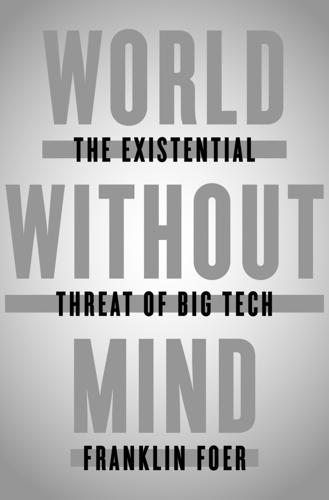
World Without Mind: The Existential Threat of Big Tech
by
Franklin Foer
Published 31 Aug 2017
All the rudiments of personal computing were, more or less, developed by the late sixties. Thanks to DEC, the Massachusetts hardware company, there were new examples of massive mainframes shrunk to more approachable microprocessors. Designers at Stanford had created the mouse. The Defense Department had wired the first internet. Visionary technologists like Doug Engelbart (inventor of the mouse) had imagined a future where machines played a much more intimate role in the lives of everyday people. But they spoke in jargon—and the machines were still too expensive, too large, and too confusing to be placed on office desks, let alone into homes. Innovations don’t magically appear or simply proceed on the basis of some scientific logic; the culture prods them into existence.

Information: A Very Short Introduction
by
Luciano Floridi
Published 25 Feb 2010
There is no term for this radical form of re-engineering, so we may use re-ontologizing as a neologism to refer to a very radical form of re-engineering, one that not only designs, constructs, or structures a system (e.g. a company, a machine, or some artefact) anew, but that fundamentally transforms its intrinsic nature, that is, its ontology. In this sense, ICTs are not merely re-engineering but actually re-ontologizing our world. Looking at the history of the mouse (http://sloan.stanford.edu/mousesite/), for example, one discovers that our technology has not only adapted to, but also educated, us as users. Douglas Engelbart (born 1925) once told me that, when he was refining his most famous invention, the mouse, he even experimented with placing it under the desk, to be operated with one's leg, in order to leave the user's hands free. Human-Computer Interaction is a symmetric relation. To return to our distinction, while a dishwasher interface is a panel through which the machine enters into the user's world, a digital interface is a gate through which a user can be present in cyberspace.
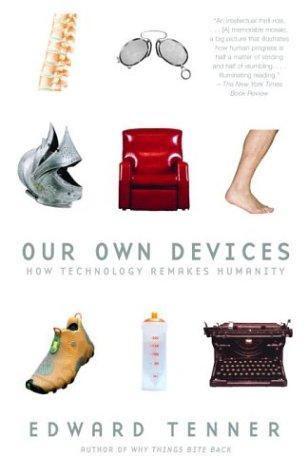
Our Own Devices: How Technology Remakes Humanity
by
Edward Tenner
Published 8 Jun 2004
Sarah Handler and the author (London: Han-Shan Tang, 1986), 14–16, 19–21; Sarah Handler, Austere Luminosity of Chinese Classical Furniture (Berkeley: University of California Press, 2001), 9–24. 6. K. H. E. Kroemer, H. B. Kroemer, and K. E. Kroemer-Elbert, Ergonomics: How to Design for Ease and Efficiency (Englewood Cliffs, N.J.: Prentice-Hall, 1994), 365–69; Thierry Bardini, Bootstrapping: Douglas Engelbart, Coevolution, and the Origins of Personal Computing (Stanford: Stanford University Press, 2000), illustration section, n.p. 7. Ralph S. Hattox, Coffee and Coffeehouses: The Origins of a Social Beverage in the Medieval Near East (Seattle: University of Washington Press, 1985), plate 12. 8. See Lorenz Homberger and Piet Meyer, “Concerning African Objects,” and Roy Sieber, “African Furniture Between Tradition and Colonization,” in Sandro Bocola, ed., African Seats (Munich: Prestel, 1996), 22–29 and 30–37, respectively. 9.
…
Norman’s The Psychology of Everyday Things (New York: Basic Books, 1988), now reprinted as The Design of Everyday Things, emphasizes the mental side of physical objects. The most important recent study of the body in today’s workplace is Shoshana Zuboff, In the Age of the Smart Machine: The Future of Work and Power (New York: Basic Books, 1988). For the history of the visionary side of technology, mind, and body, there is Thierry Bardini’s Bootstrapping: Douglas Engelbart, Coevolution, and the Origins of Personal Computing (Stanford: Stanford University Press, 2000). In cyborg anthropology, the starting point is Donna Haraway, Simians, Cyborgs, and Women: The Reinvention of Nature (New York: Routledge, 1991). Taking the theme into the Web era are Chris Hables Gray, Cyborg Citizen: Politics in the Posthuman Age (New York: Routledge, 2001), and N.

Code: The Hidden Language of Computer Hardware and Software
by
Charles Petzold
Published 28 Sep 1999
One of the first people to envision a new era of interactive computing was Ivan Sutherland (born 1938), who in 1963 demonstrated a revolutionary graphics program he had developed for the SAGE computers named Sketchpad. Sketchpad could store image descriptions in memory and display the images on the video display. In addition, you could use the light pen to draw images on the display and change them, and the computer would keep track of it all. Another early visionary of interactive computing was Douglas Engelbart (born 1925), who read Vannevar Bush's article "As We May Think" when it was published in 1945 and five years later began a lifetime of work developing new ideas in computer interfaces. In the mid-1960s, while at the Sanford Research Institute, Engelbart completely rethought input devices and came up with a five-pronged keyboard for entering commands (which never caught on) and a smaller device with wheels and a button that he called a mouse.
…
The mouse was used for selecting windows or triggering the graphical objects to perform program functions. This was software that went beyond the user interface into user intimacy, software that facilitated the extension of the computer into realms beyond those of simple number crunching. This was software that was designed—to quote the title of a legendary paper written by Douglas Engelbart in 1963—"for the Augmentation of Man's Intellect." What PARC developed in the Alto was the beginnings of the graphical user interface, or GUI (pronounced gooey). But Xerox didn't sell the Alto (one would have cost over $30,000 if they had), and over a decade passed before the ideas in the Alto would be embodied in a successful consumer product.

Total Recall: How the E-Memory Revolution Will Change Everything
by
Gordon Bell
and
Jim Gemmell
Published 15 Feb 2009
Many will soon be keeping everything from internal meetings, e-mails, and memos to external-facing activities like sales, customer support, and purchasing. And making it searchable, usable information. Time management, knowledge mining, trend discovery, context-sensitive reminding, and other computer assistance will also be applied to the institution’s broader memory. SRI, the institute where Doug Engelbart invented the computer mouse in 1964, is managing an extensive DARPA-funded research program called the Cognitive Assistant that Learns and Organizes (CALO). CALO presumes a corporate digital memory, and rather than requiring users to learn all of its ins and outs, it learns from its users and from the material their organization produces.

Free as in Freedom
by
Sam Williams
Published 16 Nov 2015
Teletype interfaces also made it possible to communicate with a machine not through a series of punched holes but through actual text. A programmer typed in commands and read the line-by-line output generated by the machine. During the late 1960s, interface design made additional leaps. In a famous 1968 lecture, Doug Engelbart, a scientist then working at the Stanford Research Institute, unveiled a prototype of the modern graphical interface. Rigging up a television set to the computer and adding a pointer device which Engelbart dubbed a " mouse," the scientist created a system even more interactive than the time-sharing system developed a MIT.

The Economic Singularity: Artificial Intelligence and the Death of Capitalism
by
Calum Chace
Published 17 Jul 2016
He claimed that there has been no profound technological innovation since the invention of the smartphone in 2007, and complained that basic science research has essentially died, with no modern equivalent of Xerox’s Palo Alto Research Centre (PARC), which was responsible for many of the fundamental features of computers which we take for granted today, like graphical user interfaces (GUIs) and indeed the PC. Markoff grew up in Silicon Valley and began writing about the internet in the 1970s. He fears that the spirit of innovation and enterprise has gone out of the place, and bemoans the absence of technologists or entrepreneurs today with the stature of past greats like Doug Engelbart (inventor of the computer mouse and much more), Bill Gates and Steve Jobs. He argues that today’s entrepreneurs are mere copycats, trying to peddle the next “Uber for X”. He admits that the pace of technological development might pick up again, perhaps thanks to research into meta-materials, whose structure absorbs, bends or enhances electromagnetic waves in exotic ways.
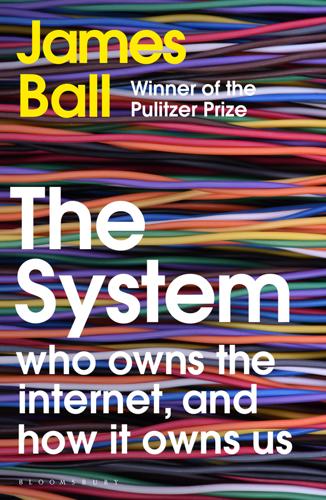
The System: Who Owns the Internet, and How It Owns Us
by
James Ball
Published 19 Aug 2020
This idea became part of computer history lore – at least among hardcore nerds – thanks to ‘the mother of all demos’, which had taken place almost fifty years to the day before Crocker and I had our conversation. It happened on 9 December 1968 in San Francisco, and it became the model for every dramatic product reveal demonstration that has followed ever since. ‘This was Doug Engelbart’s laboratory at SRI, where he introduced the mouse, hypertext and graphics to a major meeting,’ says Crocker. Today all of those elements seem mundane, but this was an era when instructions for computers were still often entered via punch cards. Seeing a mouse work real time to shift a pointer on a graphical computer was revolutionary.
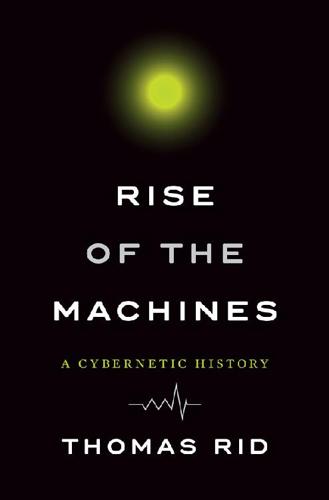
Rise of the Machines: A Cybernetic History
by
Thomas Rid
Published 27 Jun 2016
The effect of psychedelic drugs on society, to Rossman, could just as well be expressed in the language of engineering: “In the cybernetic description of process,” he wrote, “the corresponding passage is to a higher order of control—one that makes possible heterarchical rather than hierarchical control systems.”40 What he meant was simple: counterculture was changing established power structures. Top down was the past; bottom up was the future. That’s where technology came in. Rossman understood already in 1969 that computers had a key role to play in the future. As the free-speech activist was considering writing a book, the inventor Douglas Engelbart gave what became known as “the mother of all demos,” a now legendary ninety-minute presentation at the Fall Joint Computer Conference in San Francisco. Engelbart introduced the prototype of the first mouse and the vision of a personal computer, a computer that could be owned and operated by everybody, not only IBM and the Pentagon.
…
Slippery (fictional character), 266, 293 “Music in Cyberspace” (Barlow), 232 mutation, 117, 150 MVD (Ministry of the Interior, Russia), 330, 331 mythologies, form of, xiv–xv myths, cybernetic, See cybernetic myths NACA (National Advisory Committee for Aeronautics), 11, 12 NASA (National Aeronautics and Space Administration) and cyberspace, 220 cyborgs and space travel, 127–28 and data gloves, 215 Engineering Man for Space: The Cyborg Study, 127–28 founding of, 123 Philco and, 140 and Whole Earth Catalog, 168 NASw-512 project, 127–28 Natick Laboratories, Massachusetts Hardiman exoskeleton, 137 National Academy of Sciences, 25 National Advisory Committee for Aeronautics (NACA), 11, 12 National Aeronautics and Space Administration, See NASA National Defense Research Committee (NDRC) Division C, 25 Division T, 28 establishment of, 12 fire control division, 29 microwave research, 19 radar, 17 Rad Lab, 21 VT fuse, 35 National Institute of Standards and Technology (NIST), 274 National Oceanic and Atmospheric Administration (NOAA), 320 National Research Council, 12 National Science Foundation, 253 national security, cybernetic myths and, xv National Security Agency, See NSA National Technical Information Service, 324 NATO (North Atlantic Treaty Organization), 208 NAVSEA (Naval Sea Systems Command), 316 NDRC, See National Defense Research Committee negative feedback defined, 49 and enchantment of the machine, 351 for Headsight, 139 and homeostat, 56 in Psycho-Cybernetics, 164 and Whole Earth Catalog, 171–72 nervous system, as machine, 63 Netscape, 244 networked machines, 122, 147–48, 251 networks, 2–3, 180, 222 Neuromancer (Gibson), ix–x, 189, 210–12, 242 neuroses, 58 New Age movement, 165–66 “New Directions in Cryptography,” 251 New Economy, 246–47 Newsweek magazine, 73 New York Times Hap Arnold article, 74 and cybernation, 102 and cybernetics, 53 Cybernetics reviews, 51–52 NSA encryption story, 271 and VR, 219 New York Yankees, 164–65 Nietzsche, Friedrich, 140, 291 Nigh, Ron, 171 Nike missile, 78 9/11 terrorist attacks, 338–39 NIST (National Institute of Standards and Technology), 274 NOAA (National Oceanic and Atmospheric Administration), 320 nonexistent systems, 69 no-notice interoperability exercises, 311 non-secret encryption, 248, 250; See also public-key encryption NORAD (North American Air Defense Command), 77, 99 NSA (National Security Agency) and the Clipper Chip, 274 cyber-related work, x and cypherpunks, 269–71 and “Declaration of the Independence of Cyberspace,” 245 and Eligible Receiver, 311–13 and Moonlight Maze, 327, 328, 337 and public-key encryption, 253, 254, 258 and VR, 243 nuclear-powered aircraft, 128–31, 135–36 nuclear war, 208 nuclear weapons, 45, 73–76 “Numbers Can Be a Better Form of Cash Than Paper” (Chaum), 257 Nunn, Sam, 310 Oak Ridge National Laboratory, 280 Office of Naval Research, 136–37, 253 Omni magazine, 149, 243, 294–98, 301–2 OODA (observe, orient, decide, act) loop, 300 Operation Desert Storm, 302 Operation Sundevil, 238–40 Optik, Phiber (Mark Abele), 237, 238 Orenstein, Peggy, 240–41, 243 organic chemistry, 119 organic machines, 113–14 organism-environment interaction, 57–61, 64–67 organisms, 113–55 computers as thinking machines, 120–22 cyborg research, 123–27 cyborgs, feminism, and postmodernism, 151–54 and man-machine interaction, 143–48 military research on cyborgs, 128–40 and participant evolution, 140–41 radio-controlled cyborg, 138–40 self-reproducing machines as plants, 118–19 ultraintelligent machines, 148–49 viruses as, 115 originality, machine’s potential for, 120–21 Other Plane, 207, 208, 266, 288 Owens, William, 306 PACOM (US Pacific Command), 311–13 Palo Alto, California, 177, 181, 259, 264 Palomilla (tricycle cart), 83–84 Paradise Lost (Milton), 91 Parkinson, David, 23–24 Parkinson’s disease, robotic modeling of, 83–84 Parsons, Talcott, 52 participant evolution, 140–41 Partridge, Earle, 77 patriarchy, 152, 153 Patrick, Robert, 154 Patton, George, 28 Paul Proteus (fictional character), 86 Pavlov, Ivan, 62 PDP-10 mainframe computer, 181–82 Pearl Harbor, Japanese attack on, 20, 32 Pedipulator, 132–34 Pentagon, See Defense, US Department of Pentagon Papers, 254 Persian Gulf War (1990-1991), 246, 302, 305 personal computer and Apple’s 1984 Super Bowl ad, 187–88 Douglas Engelbart and, 173 William Gibson and, 211–12 Timothy Leary and, 187–89 and second wave of hackers, 184 pessimism, See dystopia peyote, 185 PGP (Pretty Good Privacy), 261, 272–73 Philco Corporation, 137–40 Phreak, Acid (Elias Ladopoulos), 237–39 physico-chemical system, nervous system as, 64 physics, nonexistent systems and, 69 PicoSpan software, 191, 193 Pile, Sir Frederick, 38–41 pip (radar image), 17 pipology, 18 plants, self-reproducing machines as, 118–19 Playboy magazine, 121–22 Player Piano (Vonnegut), 86–87 political activists, 341 political myths, xiv, xv Popular Mechanics, 132–33, 205–6 Post, Jonathan, 294–98 postmodernism, 151–54 Powell, Colin, 302, 303 Powell Doctrine, 302 power grid, 313 prime numbers, 250, 252 Princeton University, 29, 114, 115, 117 Principality of Sealand, 287–91 printing, as predecessor to crypto anarchy, 268 privacy anonymity and, 272 encryption and, 247, 256–61 programming languages, 213 progress, thinking machines and, 4 Project 2, 25 Prometheus, 343 prostheses, 50–51 proximity fuse, 26–27, 40, 41, 67 pseudonyms, 277, 281–82 pseudoscience, 160–62 psychedelic drugs, 172–73 Gregory Bateson and, 179 and computers, 189 High Frontiers magazine, 185–87 and human bio-computer, 188 and Spacewar, 182 Psycho-Cybernetics (Maltz), 162–65, 169, 345 psychopharmacology, 123 public-key encryption, 247, 248–55, 278 punk, 246 “Push-Button Warfare” (Newsweek article), 73 “Putting Humans into Virtual Space” (Furness and Kocian), 205 Queen Mu (Alison Bailey Kennedy), 263 R2-D2, 204 radar, 17–21, 80–81 radar stations, 77, 99 radio-controlled cyborg, 138–40 radio shell, 27–28, 40 Rad Lab, See MIT Radiation Laboratory RAF (Royal Air Force) Fighter Command, 8, 30 Rand, Ayn, 258 Rand Corporation, 111, 303–5, 309–10 Randolph Air Force Base (San Antonio, Texas), 122–24 range computer, 24 Rather, Dan, 203 read-only memory (ROM), 23 Reality Hackers magazine, 218–19 Rees-Mogg, Lord William, 285 relationships, technology and, 2–3 religion and cybernetic myth, 348 God and Golem, Inc., 89–92 and spiritual aspects of cybernetics, 348 remailers, 272–73, 291 reproduction, See self-replicating machines Revolution in Military Affairs (RMA), 302–3, 306 Rheingold, Howard, 232, 235–37, 242 Riley, Frank, 87–88 Rivest, Ron, 251–54 RMA (Revolution in Military Affairs), 302–3, 306 robot (term), 83 robot bomb, 40–41; See also V-1 (Vergeltungswaffe 1) flying bomb Rockland State Hospital (Orangeburg, New York), 123–24 Roger Pollack (fictional character), 207 Rolling Stone, 181 ROM (read-only memory), 23 Ronfelt, David, 303–5, 309 Roosevelt, Franklin D., 12 Rorvik, David, 141–42 Rosenblueth, Arturo, 46, 52, 56 Rossman, Michael, 172–73 Roughs Tower, 287 Royal Air Force (RAF) Fighter Command, 8, 30 rue, Larry, 9 R.U.R.
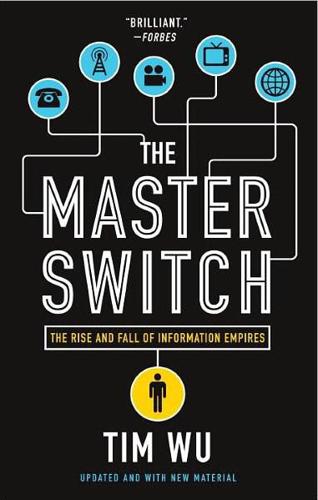
The Master Switch: The Rise and Fall of Information Empires
by
Tim Wu
Published 2 Nov 2010
.…” The idea is one we take for granted now: computers would be used by humans in the process of thinking, as analytic aids rather than as calculators (the status quo) or as surrogates (the stuff of fantasy).4 The idea wasn’t Licklider’s alone. As with other conceptual leaps we’ve described, several individuals also made it at about the same time. Ten years before Licklider wrote his paper, for instance, a young engineer named Douglas Engelbart was pondering what he might do with his life. He was recently married yet felt himself lost, an idealist in search of a meaningful contribution. One evening in 1950 he was struck with a powerful vision: a general purpose machine that might augment human intelligence and help humans negotiate life’s complexities.
…
As Wozniak told me, the Macintosh, launched in 1984, marked a departure from many of his ideas as realized in the Apple II. To be sure, the Macintosh was radically innovative in its own right, being the first important mass-produced computer to feature a “mouse” and a “desktop”—ideas born in the mind of Douglas Engelbart in the 1950s, ideas that had persisted without fructifying in computer science labs ever since.* Nevertheless the Mac represented an unconditional surrender of Wozniak’s openness, as was obvious from the first glance: gone was the concept of the hood. You could no longer easily open the computer and get at its innards.

Make Your Own Job: How the Entrepreneurial Work Ethic Exhausted America
by
Erik Baker
Published 13 Jan 2025
Anticipating Jobs by nearly two decades, the commission predicted a “new technology” that would “seek to make work more meaningful rather than merely more productive,” with “machines and automated processes” performing “the routine and mechanical work” so that “human resources” could be “released and available for new activities beyond those that are required for mere subsistence.”38 For other personal computing researchers working in the Valley at roughly the same time as Jobs—such as Douglas Engelbart, the driving force behind Stanford’s Augmentation Research Center (ARC), and Alan Kay, one of the leaders of the effort to develop a personal computer at the Xerox Palo Alto Research Center (PARC)—the muse of their hopes for personal computing was not just Brand but Peter Drucker, who had argued as early as the late 1960s that “the computer is a tool of liberation if used correctly.”
…
See also Turner, Counterculture to Cyberculture; Isaacson, Steve Jobs, 56–57. 38Technology and the American Economy: Report of the National Commission on Technology, Automation, and Economic Progress, vol. 1 (Washington, DC: US Government Printing Office, February 1966), xiii. 39Peter F. Drucker, “The Once and Future Manager,” in Drucker, Technology, Management, and Society (Boston: Harvard Business Review Press, 2011 [1970]), 98; Paul B. Carrol, “Drucker Inspired the PC Revolution,” Wall Street Journal, November 18, 2005; Thierry Bardini, Bootstrapping: Douglas Engelbart, Coevolution, and the Origins of Personal Computing (Redwood City, CA: Stanford University Press, 2000), 194. 40Sheff, “Playboy Interview.” The “1984” ad can be viewed at https://www.youtube.com/watch?v=VtvjbmoDx-I. See also Isaacson, Steve Jobs, 162–165. 41Charles Reich, The Greening of America (New York: Random House, 1970), 8, 369–375. 42E.
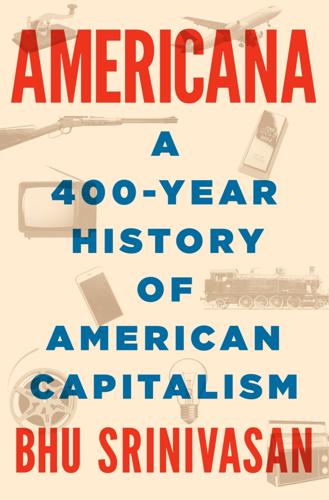
Americana: A 400-Year History of American Capitalism
by
Bhu Srinivasan
Published 25 Sep 2017
A self-proclaimed “poet, philosopher, and rogue,” Ted Nelson conceptualized and coined the term “hypertext” to mean words within documents that linked to other documents. But Nelson, lacking a science or computing background, could not make hypertext a reality. In addition to Bush and Nelson, Berners-Lee credited Doug Engelbart at Stanford for his sixties demonstration of a “mouse,” a wooden block with sensors and a ball under it, with which he clicked on words to explore information spatially. In 1989 Berners-Lee pulled all of the lessons of history together, dreaming up a visual layer—an interface—for the Internet.
…
“poet, philosopher, and rogue”: Theodor Holm Nelson, “My Life and Work, Very Brief,” Hyperland.com. coined the term: T. H. Nelson, “Complex Information Processing: A File Structure for the Complex, the Changing and the Indeterminate,” ACM ’65 Proceedings of the 1965 20th National Conference, August 24, 1965, 84–100. credited Doug Engelbart: Berners-Lee, Weaving the Web, 5–6. calling it the World Wide Web: Ibid., 23–29. National Center for Supercomputing: Ibid., 68–69. best kind of R&D: Jim Clark, Netscape Time (New York: St. Martin’s, 1999), 35. about $20 million: Ibid., 32. Clark wrote Andreessen: Ibid., 34.

Americana
by
Bhu Srinivasan
A self-proclaimed “poet, philosopher, and rogue,” Ted Nelson conceptualized and coined the term “hypertext” to mean words within documents that linked to other documents. But Nelson, lacking a science or computing background, could not make hypertext a reality. In addition to Bush and Nelson, Berners-Lee credited Doug Engelbart at Stanford for his sixties demonstration of a “mouse,” a wooden block with sensors and a ball under it, with which he clicked on words to explore information spatially. In 1989 Berners-Lee pulled all of the lessons of history together, dreaming up a visual layer—an interface—for the Internet.
…
“poet, philosopher, and rogue”: Theodor Holm Nelson, “My Life and Work, Very Brief,” Hyperland.com. coined the term: T. H. Nelson, “Complex Information Processing: A File Structure for the Complex, the Changing and the Indeterminate,” ACM ’65 Proceedings of the 1965 20th National Conference, August 24, 1965, 84–100. credited Doug Engelbart: Berners-Lee, Weaving the Web, 5–6. calling it the World Wide Web: Ibid., 23–29. National Center for Supercomputing: Ibid., 68–69. best kind of R&D: Jim Clark, Netscape Time (New York: St. Martin’s, 1999), 35. about $20 million: Ibid., 32. Clark wrote Andreessen: Ibid., 34.
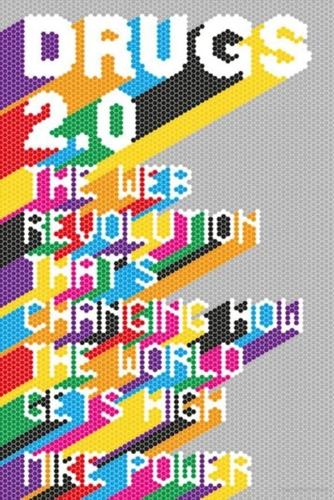
Drugs 2.0: The Web Revolution That's Changing How the World Gets High
by
Mike Power
Published 1 May 2013
Its technological cornerstone – the packet-switching network – underpinned all the later digital developments that would enable the reeling madness and quotidian mundanity that comprises a day online today – a day that includes buying groceries, paying bills, sharing photos and ideas, updating the world on your latest hairstyle choices, and, for many more people than is currently acknowledged, talking about and buying drugs. Few involved in the early days of the internet could ever have imagined how central to billions of people’s lives it was to become, but some of them dreamed of it. A year before the ARPANET came online, on 9 December 1968, Doug Engelbart, the ultimate unsung conceptual, philosophical and practical pioneer of modern computing, addressed a crowd of 1,000 programmers at Stanford Research Institute in Menlo Park, California. It was an event that was to become known as the Mother of All Demos, and during it Engelbart displayed publicly, in one gargantuan techno-splurge, many of the concepts of computing that are so ubiquitous today: the mouse (‘I don’t know why we call it a mouse.
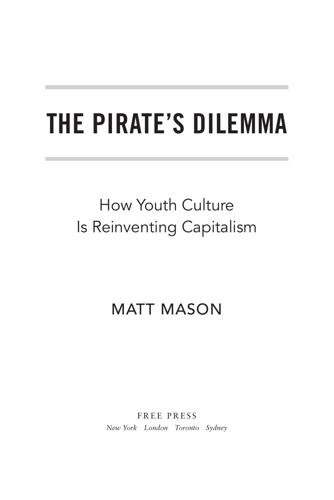
The Pirate's Dilemma: How Youth Culture Is Reinventing Capitalism
by
Matt Mason
Some were hippies themselves. According to John Markoff, author of What the Dormouse Said: How 60s Counterculture Shaped the Personal Computer, “There was this very interesting parallel between the way they worked with psychedelics—which was about augmenting human potential— and the works of a man named Doug Engelbart [a pioneer of humancomputer interaction, who, among other things, invented the mouse], who was attempting to build a machine that he thought would augment the human mind.” The pioneers of Palo Alto had the same D.I.Y. attitude that energized punk. Their ideas for a new social machine were a reaction to the war machine and the establishment in general.
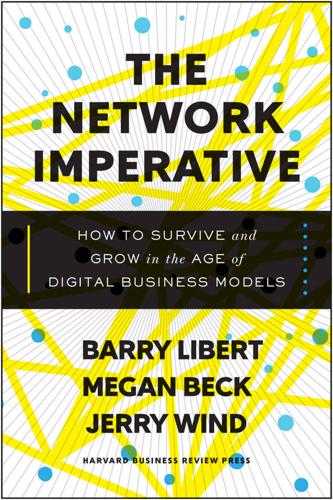
The Network Imperative: How to Survive and Grow in the Age of Digital Business Models
by
Barry Libert
and
Megan Beck
Published 6 Jun 2016
To start, you could turn to a group of your peers, preferably those with some diversity in their thinking. Ask them to join you on this exciting journey. PRINCIPLE 1 TECHNOLOGY From Physical to Digital The digital revolution is far more significant than the invention of writing or even printing. —Douglas Engelbart, internet pioneer PEOPLE OFTEN HAVE TROUBLE IDENTIFYING WHAT THEY REALLY VALUE, but priorities emerge during times of crisis. In the summer of 2015, waves of Syrians fled the civil war in their homeland. Although the refugees carried food, water, and money in their backpacks, for most of them, the most important survival asset was their smartphone.1 When these refugees enter a new country, the first to-do item is to get a new SIM card and get online.
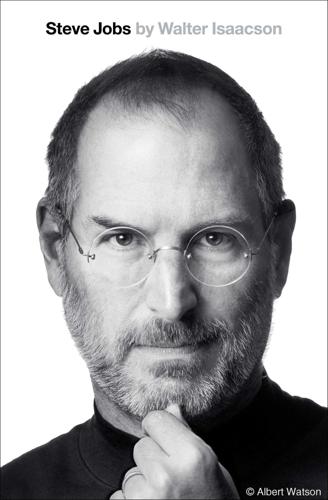
Steve Jobs
by
Walter Isaacson
Published 23 Oct 2011
There was a hacker subculture—filled with wireheads, phreakers, cyberpunks, hobbyists, and just plain geeks—that included engineers who didn’t conform to the HP mold and their kids who weren’t attuned to the wavelengths of the subdivisions. There were quasi-academic groups doing studies on the effects of LSD; participants included Doug Engelbart of the Augmentation Research Center in Palo Alto, who later helped develop the computer mouse and graphical user interfaces, and Ken Kesey, who celebrated the drug with music-and-light shows featuring a house band that became the Grateful Dead. There was the hippie movement, born out of the Bay Area’s beat generation, and the rebellious political activists, born out of the Free Speech Movement at Berkeley.
…
A puckish visionary who generated fun and ideas over many decades, Brand was a participant in one of the early sixties LSD studies in Palo Alto. He joined with his fellow subject Ken Kesey to produce the acid-celebrating Trips Festival, appeared in the opening scene of Tom Wolfe’s The Electric Kool-Aid Acid Test, and worked with Doug Engelbart to create a seminal sound-and-light presentation of new technologies called the Mother of All Demos. “Most of our generation scorned computers as the embodiment of centralized control,” Brand later noted. “But a tiny contingent—later called hackers—embraced computers and set about transforming them into tools of liberation.

Only Humans Need Apply: Winners and Losers in the Age of Smart Machines
by
Thomas H. Davenport
and
Julia Kirby
Published 23 May 2016
“But then somebody at Scientific American had the insight to test the efficiency of locomotion of a man on a bicycle,” Jobs explained. “And a person on a bicycle blew the condor away—it was completely off the top of the chart. And that is what a computer is to me. It’s the most remarkable tool that we have ever come up with. It’s the equivalent of a bicycle for our minds.”3 Jobs was almost assuredly inspired by the late Doug Engelbart in this (who in turn was inspired by MIT computer visionary Vannevar Bush). Engelbart, the inventor of the point-and-click computer user interface, and the mouse to use with it, was perhaps the first to embrace the term augmentation, which in his view involved getting machines to perform the mechanical aspects of thinking and idea sharing.

The Deep Learning Revolution (The MIT Press)
by
Terrence J. Sejnowski
Published 27 Sep 2018
Quartz and T. J. Sejnowski, Liars, Lovers, and Heroes: What the New Brain Science Reveals About How We Become Who We Are (New York: Harper Collins, 2002). 40. Douglas C. Engelbart, Augmented Intelligence: Smart Systems and the Future of Work and Learning, SRI Summary Report AFOSR-3223 (Washington, DC: Doug Engelbart Institute, October 1962). http://www.dougengelbart.org/pubs/augment -3906.html. 41. M. Young, “Machine Learning Astronomy,” Sky and Telescope, December (2017): 20–27. 42. “Are ATMs Stealing Jobs?“ The Economist, June 15, 2011. https://www.economist .com/blogs/democracyinamerica/2011/06/technology-and-unemployment/. 43.

Power and Progress: Our Thousand-Year Struggle Over Technology and Prosperity
by
Daron Acemoglu
and
Simon Johnson
Published 15 May 2023
Licklider’s analysis is still relevant today, more than sixty years after its publication, especially in his emphasis that “relative to men, computing machines are very fast and very accurate, but they are constrained to perform only one or a few elementary operations at a time. Men are flexible, capable of ‘programming themselves contingently’ on the basis of newly received information.” The second proponent of this alternative vision, Douglas Engelbart, also articulated ideas that are precursors to our notion of machine usefulness. Engelbart strove to make computers more usable and easier to operate for nonprogrammers, based on his belief that they would be most transformative when they were “boosting mankind’s capability for coping with complex, urgent problems.”
…
A reconstruction of the Bombe, designed by Alan Turing to speed up the decryption of German signals during World War II. 24. MIT math professor Norbert Wiener brilliantly warned in 1949 about a new “industrial revolution of unmitigated cruelty.” 25. An imaginative drawing of Jacques de Vaucanson’s digesting duck. 26. Human-complementary technology: Douglas Engelbart’s mouse to control a computer, introduced at the “Mother of All Demos” in 1968. 27. So-so automation: customers trying to do the work, and sometimes failing, at self-checkout kiosks. 28. Facebook deciding what is and what is not fit for people to see. 29. Monitoring workflow inside an Amazon fulfillment center. 30.
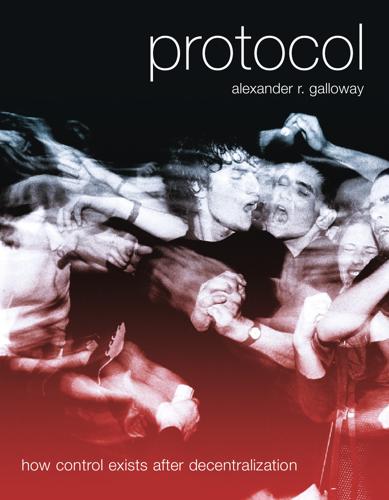
Protocol: how control exists after decentralization
by
Alexander R. Galloway
Published 1 Apr 2004
Many others have followed in Wiener’s footsteps. In 1960 J. C. R. Licklider, an early theorist and researcher of computer networks, wrote about what he called the “man-machine symbiosis.” Marshall McLuhan also claimed that technology itself is nothing but an extension of man’s nervous system. Computer pioneer Douglas Engelbart considered technology to be simply an augmentation of the human faculties. For relevant texts by Licklider and Engelbart, see Randall Packer and Ken Jordan, Multimedia: From Wagner to Virtual Reality (New York: Norton, 2001). Other theorists such as Donna Haraway have quite literally fused human and Chapter 3 106 Wiener’s prose is tinged by anxiety over what he considered to be the vast potential for his scientific work to contribute to the “concentration of power . . . in the hands of the most unscrupulous.”85 Writing in the shadow of World War II and the atomic bomb, Wiener exhibits a grave concern, not only with the bomb but also with more general social exploitation, be it in the form of a recently defeated Nazism or a once more bullish American capitalism (he does not tell readers which).
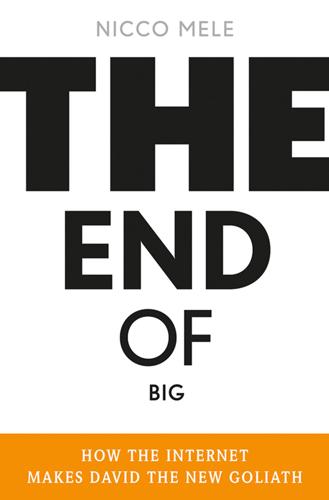
The End of Big: How the Internet Makes David the New Goliath
by
Nicco Mele
Published 14 Apr 2013
, the small computer side has birthed a range of technologies culminating in your current Droid or iPhone. There is a particular hero to this strand of American nerd-ocity, one whose story begins to elucidate the political ideology behind the personal computer, and he is the computer scientist Douglas Engelbart. “The Mother of All Demos” A product of the greatest generation that fought World War II, Engelbart had a sense of the United States’ grandeur and majesty when dedicated to a great challenge, and during the 1950s and 60s he was looking for the next great challenge. Inspired by Vannevar Bush’s article “As We May Think,” which championed the wider dissemination of knowledge as a national peacetime challenge, Engelbart imagined people sitting at “working stations”9 and coming together in powerful ways thanks to modern computing.

New Dark Age: Technology and the End of the Future
by
James Bridle
Published 18 Jun 2018
The appearance of the first integrated circuits in turn allowed him to create video display units from old televisions, until he had all the components of an actual computer – which never quite worked, but never mind. And by this time, he was at university, studying physics; after that, he worked on typesetting for digital printers, before joining CERN, where he developed the idea for hypertext – previously expounded by Vannevar Bush, Douglas Engelbart, and others. And because of where he was working and the need of researchers to share interlinked information, he tied this invention to the Transmission Control Protocol (TCP) and the domain name systems that underpin the emerging internet and – ta-da! – the World Wide Web just happened, as naturally and obviously as if it were meant to be.

Restarting the Future: How to Fix the Intangible Economy
by
Jonathan Haskel
and
Stian Westlake
Published 4 Apr 2022
In his book The New Geography of Jobs, Enrico Moretti reports disengagement with the political process, but shortly after his book’s publication, a wave of political entrepreneurs around the world provided disengaged voters with something that appealed to them: populism, often combined with promises of bringing back a social and economic world that had been lost.15 We might hope that technology will rescue us from this double bind of rich-but-strangled cities and decaying, disaffected towns and that the COVID-19 home-working revolution might accelerate this change. In 1968, computer scientist Douglas Engelbart demonstrated videoconferencing and simultaneous collaborative document editing.16 Three decades later, the journalist Frances Cairncross coined the term “the death of distance” to describe a world in which these technologies would free the economy from the vulgar constraints of place.17 At the beginning of 2020, place remained at least as important as ever: to the extent that people invoked the death of distance, they did so as an example of the naive optimism of yesteryear, alongside flying cars, the paperless office, and the end of history.

Road to Nowhere: What Silicon Valley Gets Wrong About the Future of Transportation
by
Paris Marx
Published 4 Jul 2022
But, even more than that, the new narratives they embraced about the power of technology to promote economic growth and market-based innovation downplayed the role of government in enabling the development of most of the technologies that they profited from in the first place, and even how many of the businesses that now dominate the Valley received public support. The internet is a clear example of a technology that originated in the public sector and was consumed by the corporate sector—including the protocols and architecture that make it function. But there is so much more than that. In 1968, Douglas Engelbart showed off the oN-Line System in what has become known as “The Mother of All Demos.” Engelbart and his team had developed a number of technologies at Stanford Research Institute with ARPA funding that went on to define the computing experience: the mouse, the QWERTY keyboard, bitmapped screens, and even the ability of users at multiple sites to edit the same document simultaneously.

Who Owns the Future?
by
Jaron Lanier
Published 6 May 2013
We GBN “remarkables” were so-named to recall the esoteric masters Gurdjieff supposedly had to seek by climbing mountains in Turkmenistan. Feminism tempered the honorary title to “Remarkable People.” Meanwhile, the world of marketing was being reinvented at the Stanford Research Institute. This is the same SRI that employed Doug Engelbart, who first demonstrated the basics of person-oriented computing in the 1960s. More recently SRI spawned Siri, the voice interface used in Apple products. SRI had a unit called VALS, for Values, Attitudes, and Lifestyles, which was for a while the guiding light of a transformation in corporate marketing.

Capitalism Without Capital: The Rise of the Intangible Economy
by
Jonathan Haskel
and
Stian Westlake
Published 7 Nov 2017
It seems very likely that at some point people will discover better ways to interact meaningfully with one another at a distance using IT, as new applications develop and the workforce becomes populated by people who grew up with online social lives and hobbies. The question of how people use technology to boost what some call “collective intelligence” has a long history: it lies behind the famous “mother of all demos,” the 1968 presentation in which Douglas Engelbart demonstrated the world’s first instances of videoconferencing, dynamic file linking, revision control, and electronic collaboration. Collective intelligence is intimately entwined with the development of Internet phenomena like Wikipedia, and it continues to evolve in the form of platforms like Slack and GitHub.
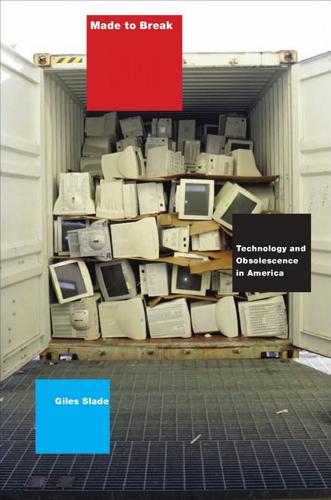
Made to Break: Technology and Obsolescence in America
by
Giles Slade
Published 14 Apr 2006
Between 1973 and 1975 Xerox Corporation designed and built a personal computer called the Alto at its Palo Alto Research Center (PARC). The Alto’s interface was originally called WIMP, an acronym for Windows, Icons, Mouse, and Pull-down menus. At the center of its graphical user interface was the mouse, a device that had been invented in 1965 by Douglas Engelbart, head of the Human Factors Research Center, a work group that studied the Man and computer interface (or Mac) at the Stanford Research Institute. Engelbart based his invention on an obsolete engineering tool called the planimeter, an antiquated device once as common as a slide rule. When an engineer moved the planimeter over the surface of a curve, it calculated the underlying area.

What Algorithms Want: Imagination in the Age of Computing
by
Ed Finn
Published 10 Mar 2017
In fact, as historian Ronald Kline describes, the entire enterprise was a public relations stunt, the construction of the robot financed by Life magazine, which planned to run an article on cybernetics.41 Wiener’s demonstration machine presaged future spectacles of human–machine interaction like early Silicon Valley icon Douglas Engelbart’s “mother of all demos,” which first showcased several aspects of a functional personal computer experience in 1968. Figure 1.2 Norbert Wiener and his “moth” circa 1950. Alfred Eisenstaedt / The LIFE Picture Collection / Getty Images. The theoretical aspirations of cybernetics were always dependent on material implementation, a fact that has challenged generations of artificial intelligence researchers pursuing the platonic ideal of neural networks that effectively model the human mind.42 Kline reports that Life never ran photos of Wiener’s moth because an editor felt the machine “illustrated the analogy between humans and machines by modeling the nervous system, rather than showing the human characteristics of computers, which was Life’s objective.”43 In the end, Wiener had built a bug.

This Is Your Country on Drugs: The Secret History of Getting High in America
by
Ryan Grim
Published 7 Jul 2009
The history of this connection is well documented in a number of books, the best probably being What the Dormouse Said: How the 60s Counterculture Shaped the Personal Computer, by New York Times technology reporter John Markoff. Psychedelic drugs, Markoff argues, pushed the computer and Internet revolutions forward by showing folks that reality can be profoundly altered through unconventional, highly intuitive thinking. Douglas Engelbart is one example of a psychonaut who did just that: he helped invent the mouse. Apple’s Steve Jobs has said that Microsoft’s Bill Gates would “be a broader guy if he had dropped acid once.” (In a 1994 interview with Playboy, however, Gates coyly didn’t deny having dosed as a young man.) Markoff writes that Jobs told him that his own LSD experience was “one of the two or three most important things he has done in his life.”

What Technology Wants
by
Kevin Kelly
Published 14 Jul 2010
Faster jet engines don’t lead to higher corn yields, nor do better lasers lead to faster drug discoveries, but faster computer chips lead to all of these. These days all technology follows computer technology. Second, finding inevitability in one key area of technology suggests invariance and directionality may be found in the rest of the technium. This seminal trend of steadily increasing computing power was first noticed in 1960 by Doug Engelbart, a researcher at Stanford Research Institute (now SRI International) in Palo Alto, California, who would later go on to invent the “windows and mouse” computer interface that is now ubiquitous. When he first started as an engineer, Engelbart worked in the aerospace industry testing airplane models in wind tunnels, where he learned how systematic scaling down led to all kinds of benefits and unexpected consequences.
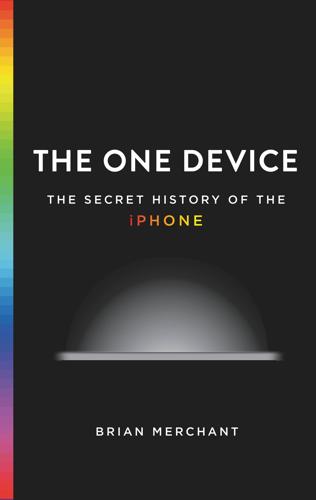
The One Device: The Secret History of the iPhone
by
Brian Merchant
Published 19 Jun 2017
Alexander Graham Bell, recall, went on tours and put on shows in exhibition halls and convention centers across the Eastern Seaboard to demonstrate his new telephone. But the most famous tech demo of all was the one that may have most informed Jobs’s style. In 1968, an idealistic computer scientist named Doug Engelbart brought together hundreds of interested industry onlookers at the San Francisco Civic Center—the same civic center where the iPhone 7 demo was made nearly forty years later—and introduced a handful of technologies that would form the foundational DNA of modern personal computing. Not only did Engelbart show off publicly a number of inventions like the mouse, keypads, keyboards, word processors, hypertext, videoconferencing, and windows, he showed them off by using them in real time.
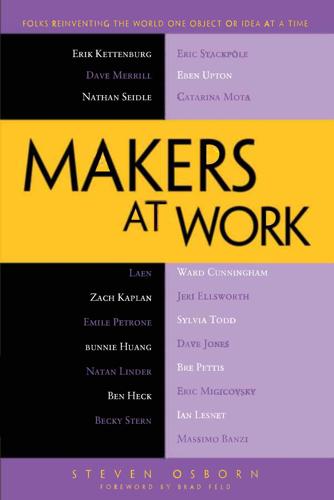
Makers at Work: Folks Reinventing the World One Object or Idea at a Time
by
Steven Osborn
Published 17 Sep 2013
Computing has the mouse, which we use as a hammer to shape things in the electronic world, but until recently, that has been the only way to interact with the digital things. Merrill: My personal history of the greatest moments in computing is mostly about the interface, not about the underlying depths of the computer itself. I’m a huge fan of Doug Engelbart and the invention of the mouse, and all the stuff that his team at SRI2 did in the sixties. And then Ivan Sutherland and the sketchpad work—that’s basically the precursor of tablets and stylus-based computing, which he did in the sixties at MIT. Watching Jeff Han was another moment like that.
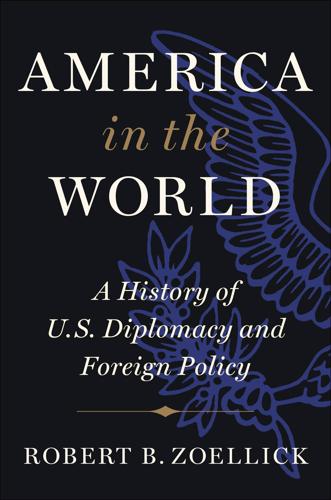
America in the World: A History of U.S. Diplomacy and Foreign Policy
by
Robert B. Zoellick
Published 3 Aug 2020
At a time when the world had only begun to consider the possibilities of huge computers—much less smaller ones—Bush was anticipating a new era of information technology accessible to the public.5 As Walter Isaacson explained in his book The Innovators, a number of the revolutionary creators of personal computers traced their inspiration to Bush and his article. In 1945, Douglas Engelbart shipped out to the Philippines as a young navy radar technician as the war was ending. He recalled rummaging through a Red Cross library in a thatched hut on stilts on Leyte Island, where Engelbart discovered an illustrated Life magazine reprint of Bush’s article. “The whole concept of helping people work and think that way just excited me,” Engelbart remembered years later.
…
He imagined a desktop information, memory, processing, and interconnecting machine that empowered individuals. Bush never made the transition from the analog to digital worlds. He preferred wrenches and machines with gears to code and devices with software. The inventors of personal computers—people such as Douglas Engelbart, J. C. Licklider, and Theodore Nelson—embraced Bush anyway. They increased the acceptability of their radical ideas by tracing a provenance to Bush, the elder statesman of science. Fred Terman, a doctoral student of Bush’s who became Stanford’s dean of engineering and then provost, created an industrial park that later became known as Silicon Valley.
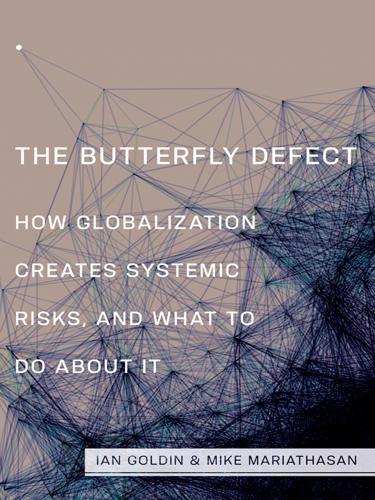
The Butterfly Defect: How Globalization Creates Systemic Risks, and What to Do About It
by
Ian Goldin
and
Mike Mariathasan
Published 15 Mar 2014
The current period of integration is revolutionary in that a larger set of changes have occurred with a pervasively wider influence than over any comparably short time in previous phases of globalization.3 We consider, in turn, two additional examples of global connectivity that we feel are unique and have significantly lowered the transaction costs of economic integration. The first is innovation and technological progress, particularly with respect to computing power and information technologies. In the late 1960s Douglas Engelbart, a computer scientist at the Stanford Research Institute, gave a demonstration of the new technological opportunities emerging with the advent of personal computing. His ideas on the user experience constituted a milestone in personal computer usage and inspired many of the breakthroughs that have gone on to transform the world.
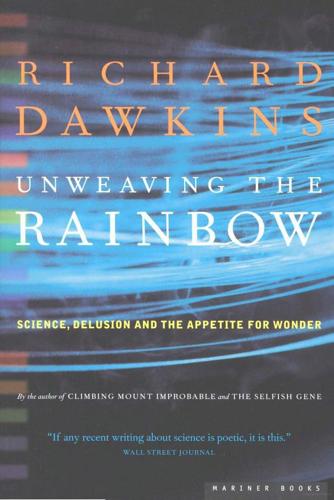
Unweaving the Rainbow
by
Richard Dawkins
Published 7 Aug 2011
I overwhelmingly felt that the software I wanted to write was held up for want of a critical hardware breakthrough. Later I discovered that the device I desperately needed, but wasn't clever enough to imagine, had in fact been invented much earlier. That device was, of course, the mouse. The mouse was a hardware advance, conceived in the 1960s by Douglas Engelbart who foresaw that it would make possible a new kind of software. This software innovation we now know, in its developed form, as the Graphical User Interface, or GUI, developed in the 1970s by the brilliantly creative team at Xerox PARC, that Athens of the modern world. It was cultivated into commercial success by Apple in 1983, then copied by other companies under names like VisiOn, GEM and—the most commercially successful today—Windows.

Smart Mobs: The Next Social Revolution
by
Howard Rheingold
Published 24 Dec 2011
Licklider was put in charge of ARPA’s Information Processing Technology Office in the early 1960s, where he sponsored the creation of blue sky technologies that conventional computer manufacturers weren’t interested in—the graphical interface, the personal computer, and computer networks.82 The problems to be overcome in achieving such a partnership between computers and humans were only partially a matter of building better computers and only partially a matter of learning how minds interact with information. The most important questions were not about either the brain or the technology, but about the organizational restructuring that would inevitably occur when a new way to think was introduced. As it turned out, another maverick thinker in California, Douglas Engelbart, had been pursuing exactly this problem for years. Engelbart, a twenty-five-year-old veteran, had been a radar operator in World War II. When he read “As We May Think,” while awaiting a ship home from the Pacific, he realized that the postwar world would be dominated by problems of unprecedented complexity.

Licence to be Bad
by
Jonathan Aldred
Published 5 Jun 2019
Bell is in the history books only because, in 1874, Meucci let the statement lapse because he could not afford the $10 renewal fee.15 It’s not just that Bill Gates was lucky. His success depended greatly on the work of others, starting with Charles Babbage. Similarly, while Apple were lauded and rewarded for introducing a computer mouse to accompany their Mac desktop in 1984, it was Douglas Engelbart and Bill English who, with funding from the US Air Force, had invented the computer mouse back in the early 1960s.fn1 When, in popular mythology, a single individual is strongly associated with a new product, invention or breakthrough, it is exactly that – a myth. Trying to tease out one person’s contributions is a hopeless task.

Boom: Bubbles and the End of Stagnation
by
Byrne Hobart
and
Tobias Huber
Published 29 Oct 2024
A laser-equipped digital printer that translated ones and zeros into shapes rather than receiving instructions in terms of fixed characters would be able to print any image a computer could display. Given their focus on computing, it stands to reason that PARC’s researchers were heavily influenced by 1968’s “Mother of All Demos,” an event where Stanford engineer Douglas Engelbart showcased graphical user interfaces, a WYSIWYG text editor, and the computer mouse. Engelbart also described a proto-internet in which computers were networked by default. Many of these ideas, along with many of the researchers who worked on them with Engelbart, were central to PARC in the 1970s.
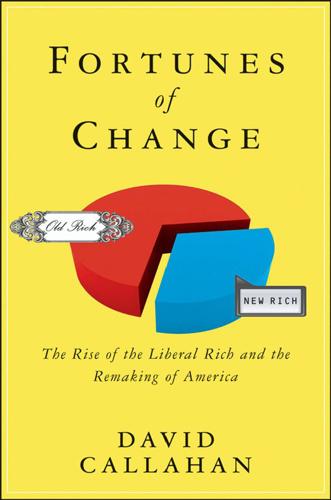
Fortunes of Change: The Rise of the Liberal Rich and the Remaking of America
by
David Callahan
Published 9 Aug 2010
In his book What the Doormouse Said: How the 60s Counterculture Shaped the Personal Computer Industry, John Markoff argues that it was inevitable that the PC would emerge on the West Coast. “The East Coast computing industry didn’t get it,” Markoff wrote. “The old computing world was hierarchical and conservative.” Markoff documents how computer engineers in the Bay Area—such as Douglas Engelbart, who would invent the computer mouse— experimented with LSD, believing that the drug could spur their creativity. Others pathbreaking technologists, such as Larry Tesler— who worked with early versions of the PC at Xerox’s Palo Alto research lab—were committed political radicals.19 Steve Jobs exemplified the link between the PC revolution and the counterculture.
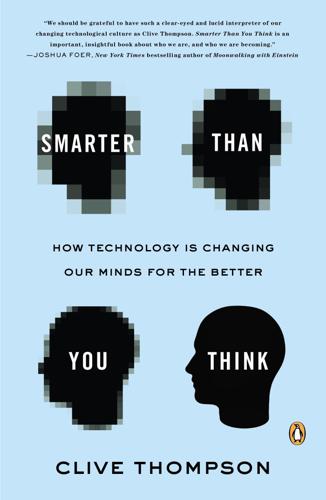
Smarter Than You Think: How Technology Is Changing Our Minds for the Better
by
Clive Thompson
Published 11 Sep 2013
This is precisely why it’s still a good idea, even today, to step away from your laptop and work out a problem on paper: cognitive diversity, again. But adding the speed and flexibility of the word processor to our tool kit has been a huge boon to thought. In his visionary 1962 essay “Augmenting Human Intellect,” Douglas Engelbart—a pioneer of the computer mouse and the files-and-folders graphical desktop—dreamed of the way cutting and pasting would one day transform our thinking. Writers equipped with electronic word processors, he prophesied, would become superior brainstormers, able to jot down ideas as rapidly as they came, then slowly hone them at leisure.
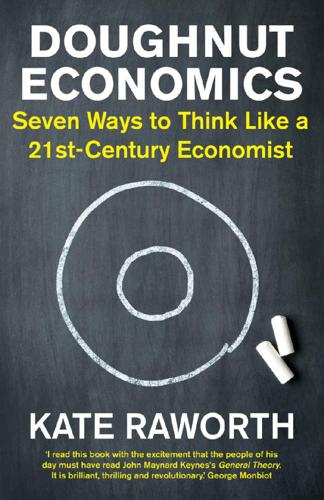
Doughnut Economics: Seven Ways to Think Like a 21st-Century Economist
by
Kate Raworth
Published 22 Mar 2017
‘Ultimately we will need to change the operating system at the heart of major corporations,’ Kelly acknowledges. ‘But if we begin there, we will fail. The place to begin is with what’s doable, what’s enlivening – and what points toward bigger wins in the future.’69 Who will own the robots? ‘The digital revolution is far more significant than the invention of writing or even of printing,’ said Douglas Engelbart, the acclaimed American innovator in human–computer interaction. He may well turn out to be right. But the significance of this revolution for work, wages and wealth hinges on how digital technologies are owned and used. So far, they have generated two opposing trends whose implications are only just beginning to unfold.
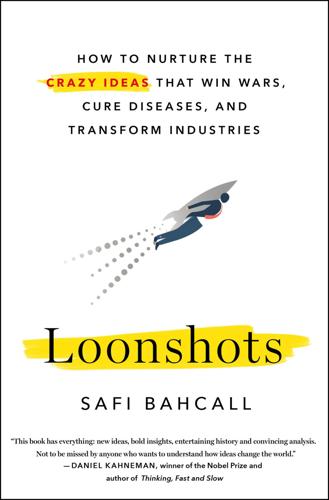
Loonshots: How to Nurture the Crazy Ideas That Win Wars, Cure Diseases, and Transform Industries
by
Safi Bahcall
Published 19 Mar 2019
The group at Utah, described in chapter 5, was co-led by a former DARPA program manager, Ivan Sutherland. Sutherland supervised the computer graphics PhD thesis of Ed Catmull, the Pixar founder, who has said he was “profoundly influenced” by the DARPA model of nurturing creativity. DARPA funded another engineer, named Douglas Engelbart, who built the first computer mouse, the first bitmapped screens (early graphical interfaces), the first hypertext links, and demonstrated them in 1968 at what computer scientists now refer to as the “Mother of All Demos.” In 1970, much of Engelbart’s team left and joined a newly created research group, led by another former DARPA program manager, Bob Taylor.
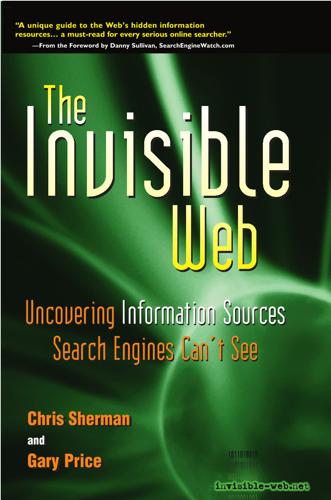
The Invisible Web: Uncovering Information Sources Search Engines Can't See
by
Gary Price
,
Chris Sherman
and
Danny Sullivan
Published 2 Jan 2003
This is a case where a general-purpose search engine failed to find the desired end result, but was indispensable in helping Wally locate the “front door” of the Invisible Web database that ultimately provided what he was looking for. This is why both general-purpose search engines and Invisible Web databases should be integral parts of your own Web search toolkit. Incidentally, U.S. Patent 3541541 is one of the early patents for what evolved into the computer mouse. When the patent was issued to inventor Douglas Engelbart in 1970, he called it an “X and Y Position Indicator.” And what about Patent Number 5187468, which turned up in all of the search engine results? That was awarded to the Microsoft Corporation in 1993 for a “Pointing device with adjustable clamp attachable to a keyboard”—essentially a mouse that attaches directly to a computer keyboard.

The Long History of the Future: Why Tomorrow's Technology Still Isn't Here
by
Nicole Kobie
Published 3 Jul 2024
‘You have to remember that until Shakey, robots literally were fictional’.15 But that was ‘basically a cover story, and the real motivation was a testbed for integrating all of artificial intelligence technologies that then existed’ – and a few that didn’t yet, including computer vision. The original project lead, Charlie Rosen, was an expert at extracting funds from military coffers for his work, regularly travelling to Washington, DC to shore up investment for himself and other researchers, including Douglas Engelbart, the original designer of the mouse. Rosen appears to have a sense of humour about his misrepresentations for cash: while he was sharing the idea of a mobile robot to test AI, a general asked if the automaton would be able to carry a gun. ‘How many do you need? I think it should easily be able to handle two or three,’ he reportedly replied – quite the promise about a shaking robot that didn’t even have an arm.8 Physically, Shakey wasn’t impressive.

Surveillance Valley: The Rise of the Military-Digital Complex
by
Yasha Levine
Published 6 Feb 2018
There was so much military work going on in Silicon Valley that, throughout the 1960s, Lockheed was the biggest employer in the Bay Area. ARPA had a huge presence on campus, too. The Stanford Research Institute did counterinsurgency and chemical warfare work for the agency as part of William Godel’s Project Agile. It also housed the Augmentation Research Center, an ARPANET site run by the acid-dropping Douglas Engelbart. Indeed, the ARPANET was part-born at Stanford.18 Into the 1990s, Stanford University hadn’t changed all that much. It was still home to cutting-edge computer and networking research and still awash in military cash and cybernetic utopianism. Perhaps the biggest change occurred in the suburbs surrounding the university—Mountain View, Cupertino, San Jose—which became thick with investors and Internet start-ups: eBay, Yahoo!
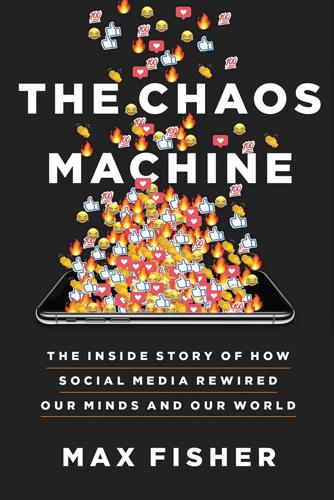
The Chaos Machine: The Inside Story of How Social Media Rewired Our Minds and Our World
by
Max Fisher
Published 5 Sep 2022
Assassinations, riots, defeat in Vietnam, and the disgraced resignation of Richard Nixon stirred up a deep hostility to centralized authority as well as a counterculture whose wild-eyed extravagances seemed appropriate for the times. But although marketers would later rewrite the computer era into one of iconoclastic dreamers, it actually began with people like Douglas Engelbart, a Naval research engineer. Through the 1960s, Engelbart, backed by grants from NASA and the Pentagon, toiled on a machine that used semiconductors to store and display information. But unlike IBM-style punch-card behemoths, it would be easy enough for nonexperts to use. The device that Engelbart finally showed off in a 1968 public demonstration displayed the first graphical interface.
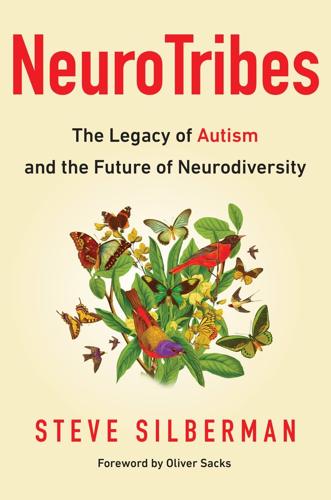
NeuroTribes: The Legacy of Autism and the Future of Neurodiversity
by
Steve Silberman
Published 24 Aug 2015
By reading manuals, he taught himself the state of the art of programming at the time: punching holes in paper tape that corresponded to individual bits and feeding the tape into a reader that sent commands to a computer. There was no operating system and no software—just spools of perforated tape. Felsenstein describes the first time he successfully programmed a computer to type the letter A as a “transcendent experience.” While he was at Ampex, a researcher from Stanford named Doug Engelbart gave a presentation at a conference in San Francisco that would go down in history as “the Mother of All Demos.” Engelbart and McCarthy worked on opposite sides of campus and represented opposite sides of a philosophical divide. While McCarthy wanted to design machines that were powerful enough to replace human intelligence, Engelbart wanted to figure out ways of using computers to augment it.

Free Speech: Ten Principles for a Connected World
by
Timothy Garton Ash
Published 23 May 2016
As we have seen, information companies obsessively follow the clickstream, watching where users go, for their own commercial reasons. This means they know an alarming amount about you, but it also means that we can vote with our mice. The naming of the computer mouse, incidentally, goes back to two American computer engineers, Doug Engelbart and Bill English, at the Stanford Research Institute in the 1960s.179 You can see at the Computer History Museum in Mountain View (and admire online) the first, wonderfully DIY mouse, crudely carved from wood, with two metal wheels.180 Nowadays, your ‘mouse’ is as likely to be your fingertip on a smartphone touchscreen, but the word endures.

The Power Law: Venture Capital and the Making of the New Future
by
Sebastian Mallaby
Published 1 Feb 2022
Millions of dollars in federal funding flowed to the Pentagon-backed research centers around Boston, and by the end of the 1960s more than a hundred tech startups had spun out of these labs.[4] If military ties had determined the location of applied science, in other words, Cambridge should have been the center of the universe.[5] If neither Stanford nor defense contracts explain Silicon Valley’s rise to preeminence, what of the theory that the region was distinguished by that West Coast counterculture, which freed people to imagine technologies as yet unborn? Doug Engelbart of the Augmented Human Intellect Research Center in Palo Alto, who conceived the early versions of the computer mouse and the graphical user interface, was involved in LSD experiments and hijacked Pentagon funding to explore the personal-growth training method known as est. The young Steve Jobs was similarly enthralled by eastern mysticism; he went about barefoot, rinsed his feet in the company toilet, and maintained that his fruitarian diet rendered regular washing obsolete.

Elon Musk
by
Walter Isaacson
Published 11 Sep 2023
MIT hackers used these video displays to create a game called Spacewar, which helped spawn commercial games that, in order to be easy enough for a stoned college student to play, had interfaces that were so intuitive they required almost no instructions. (“1. Insert quarter 2. Avoid Klingons” were the only ones on Atari’s first Star Trek game.) Doug Engelbart combined such displays with a mouse that allowed users to interface with a computer by pointing and clicking, and Alan Kay at Xerox PARC helped develop that into an easy-to-use graphical interface that mimicked a desktop. Steve Jobs adopted that for Apple’s Macintosh computer, and at his very last board meeting, as he was dying in 2011, he tested another great leap in human-computer interfaces: an application called Siri that allowed people and computers to interact by voice.

The Transhumanist Reader
by
Max More
and
Natasha Vita-More
Published 4 Mar 2013
Then I will describe the Xanadu1 system, and how it was built to achieve these goals. Improving Society Improving society is a difficult task. More generally, improving complex systems is a difficult task. If you cannot figure out which way is up, see if you can figure out which way is down. Doug Engelbart, back in the early 1960s, wanted to explain to people why interactive systems would make a significant difference to their lives, and to their ability to express ideas. The origin on the axis is what people were doing at the time – writing with pencil and paper. When he found himself unable to communicate to people how much better things could be, he contrasted their current experiences with how much worse things could be.
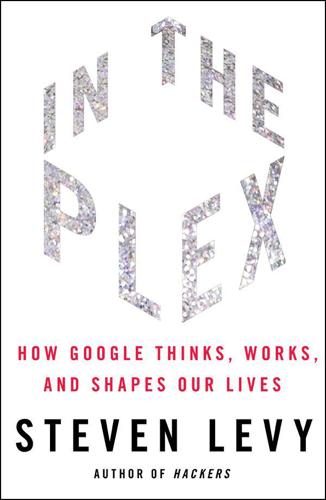
In the Plex: How Google Thinks, Works, and Shapes Our Lives
by
Steven Levy
Published 12 Apr 2011
The web’s pedigree could be traced back to a 1945 paper by the American scientist Vannevar Bush. Entitled “As We May Think,” it outlined a vast storage system called a “memex,” where documents would be connected, and could be recalled, by information breadcrumbs called “trails of association.” The timeline continued to the work of Douglas Engelbart, whose team at the Stanford Research Institute devised a linked document system that lived behind a dazzling interface that introduced the metaphors of windows and files to the digital desktop. Then came a detour to the brilliant but erratic work of an autodidact named Ted Nelson, whose ambitious Xanadu Project (though never completed) was a vision of disparate information linked by “hypertext” connections.
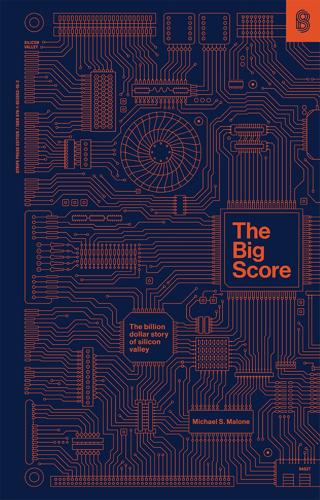
The Big Score
by
Michael S. Malone
Published 20 Jul 2021
It was only years later, plotting the future of a new company, eBay, with its two co-founders, that I finally understood what the internet could be. Too late for The Big Score. I am also haunted by my other omissions. The greatest businessman of the age, Andy Grove, has only a walk-on in The Big Score. Douglas Engelbart visited me in the Mercury-News newsroom, and because he struck me only as an eccentric entrepreneur who had never gotten credit for his achievements, he doesn’t even appear in this book. Another story I got wrong, at least in part, was the invention of the integrated circuit at Fairchild. Later historians would use the internet, and all of the newly created tech history archives, to build their narratives, but I was there.
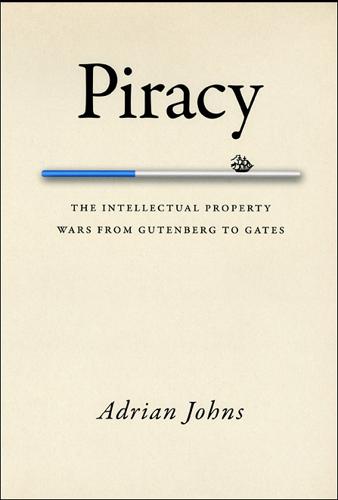
Piracy : The Intellectual Property Wars from Gutenberg to Gates
by
Adrian Johns
Published 5 Jan 2010
In the twenties FTC continued to defy the radio trust, recruiting radio amateurs to assist in circumventing patent restrictions while winking at local emulators of its own technology. A Palo Alto industry dedicated to advanced technologies developed alongside it that was antithetical to patent pools. The cluster of research institutions that subsequently emerged in the area drew on this tradition. The three principal sites – Douglas Engelbart’s Augmented Human Intellect Research Center, exMIT professor John McCarthy’s Stanford Artificial Intelligence Laboratory, and, a little later, Xerox’s Palo Alto Research Center – embraced an understanding of the computer as another key to a liberating democratization of thinking and acting. The commitment to openness therefore shifted from a technocratic maxim to a democratic one.
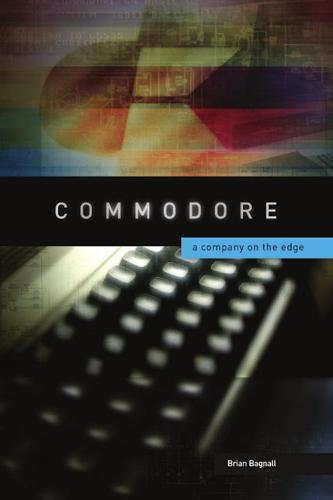
Commodore: A Company on the Edge
by
Brian Bagnall
Published 13 Sep 2005
The first two floors of this big convention center are set up for all the big computer guys. It’s a dog-and-pony show with IBM limousines and all that s**t.” The very first National Computer Conference was four years earlier, in New York City. The conference regularly attracted such distinguished speakers as Douglas Engelbart, the inventor of the mouse. Normally the conference was the domain of the larger computer companies. The industry commonly referred to the big eight computer companies as “IBM and the seven dwarfs,” which included Univac, Burroughs, Scientific Data Systems, Control Data Corporation, General Electric, RCA and Honeywell.

The Rise of the Network Society
by
Manuel Castells
Published 31 Aug 1996
Behind the development of the Internet there was the scientific, institutional, and personal networks cutting across the Defense Department, National Science Foundation, major research universities (particularly MIT, UCLA, Stanford, University of Southern California, Harvard, University of California at Santa Barbara, and University of California at Berkeley), and specialized technological think-tanks, such as MIT’s Lincoln Laboratory, SRI (formerly Stanford Research Institute), Palo Alto Research Corporation (funded by Xerox), ATT’s Bell Laboratories, Rand Corporation, and BBN (Bolt, Beranek & Newman). Key technological players in the 1960s–1970s were, among others, J. C. R. Licklider, Paul Baran, Douglas Engelbart (the inventor of the mouse), Robert Taylor, Ivan Sutherland, Lawrence Roberts, Alex McKenzie, Robert Kahn, Alan Kay, Robert Thomas, Robert Metcalfe, and a brilliant computer science theoretician Leonard Kleinrock, and his cohort of outstanding graduate students at UCLA, who would become some of the key minds behind the design and development of the Internet: Vinton Cerf, Stephen Crocker, Jon Postel, among others.

The Stack: On Software and Sovereignty
by
Benjamin H. Bratton
Published 19 Feb 2016
The world is still full of pre-Copernicans, across the political spectrum, and disturbances to human privilege will continue to invite violent pushback. The status of the User as a political and technological creature will stage much of this conflict to come, and it will draw both our deepest intelligence and stupidity to the surface. An early work by Douglas Engelbart from 1960 is “Special Considerations of the Individual as User, Generator, and Retriever of Information.” Among the considerable effects for “the individual” of Engelbart's later work, as one of the key designers of many of the interfacial systems we today take for granted (he was key contributor to the design of the mouse, pointer, and pull-down menu, among other techniques), has been the conflation of the use, generation, and retrieval of information under a single actor, the User.

Artificial Intelligence: A Modern Approach
by
Stuart Russell
and
Peter Norvig
Published 14 Jul 2019
It is now a common (although far from universal) view among psychologists that “a cognitive theory should be like a computer program” (Anderson, 1980); that is, it should describe the operation of a cognitive function in terms of the processing of information. For purposes of this review, we will count the field of human–computer interaction (HCI) under psychology. Doug Engelbart, one of the pioneers of HCI, championed the idea of intelligence augmentation—IA rather than AI. He believed that computers should augment human abilities rather than automate away human tasks. In 1968, Engelbart’s “mother of all demos” showed off for the first time the computer mouse, a windowing system, hypertext, and video conferencing—all in an effort to demonstrate what human knowledge workers could collectively accomplish with some intelligence augmentation.